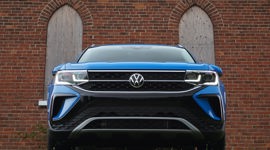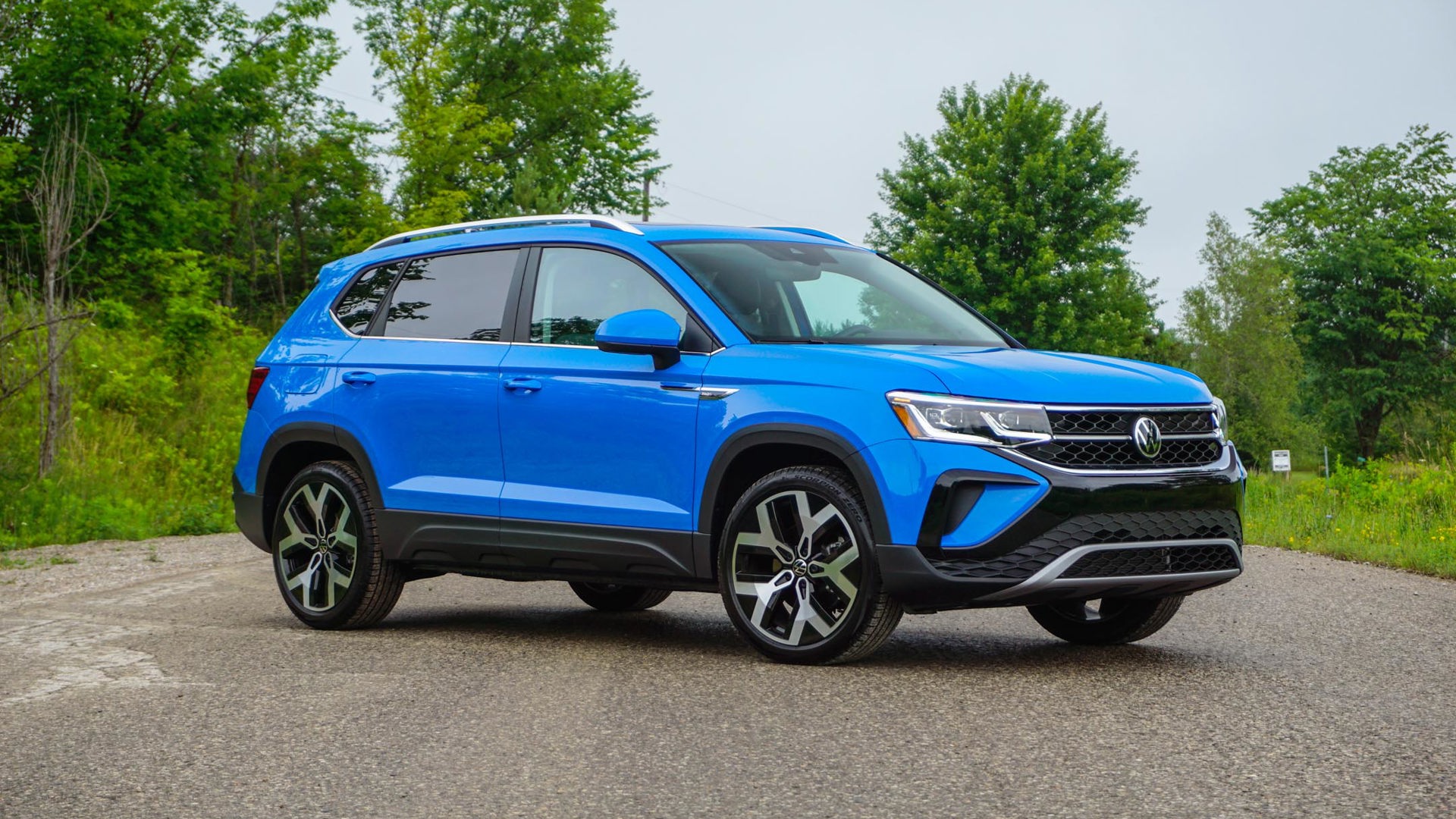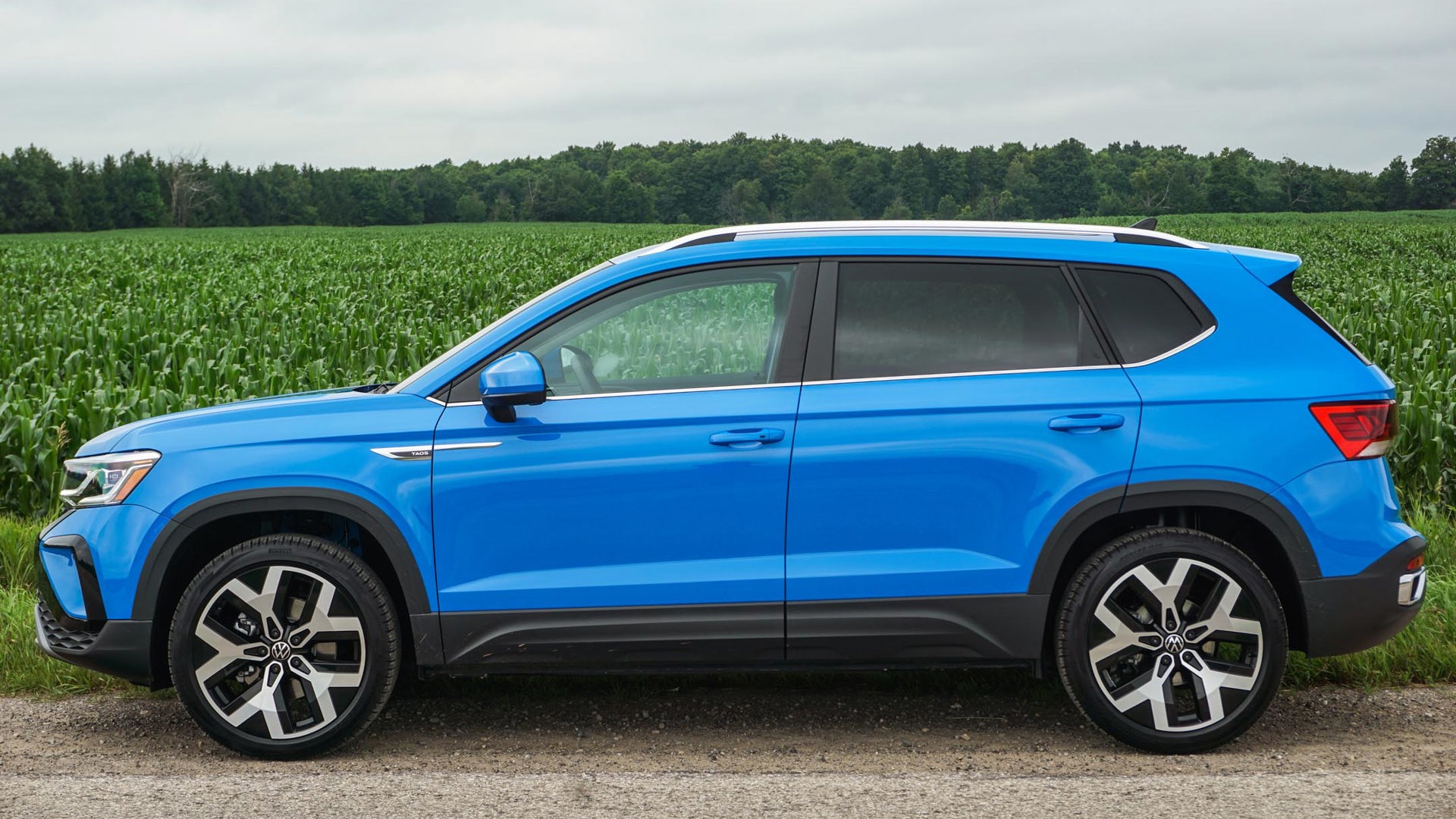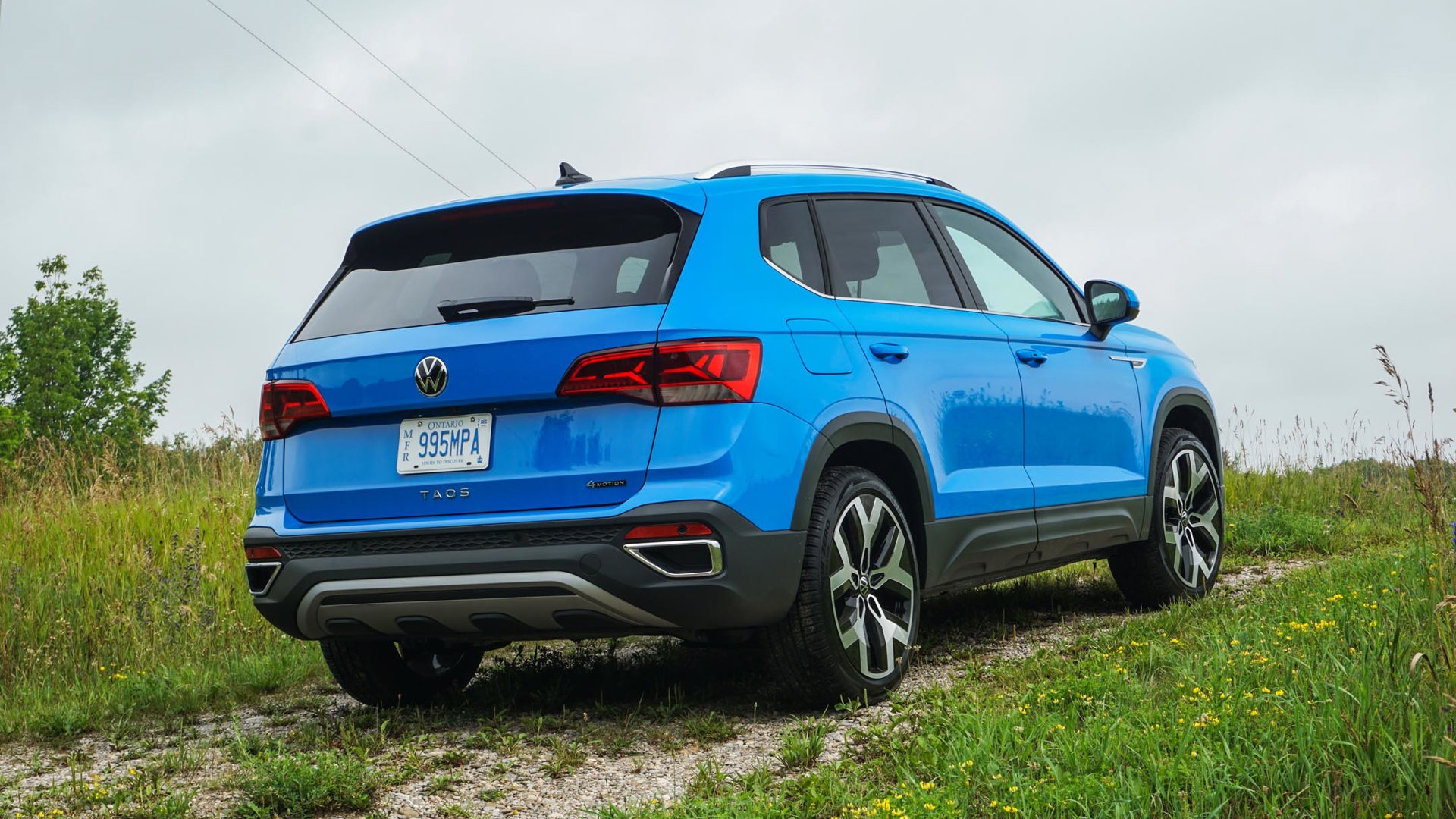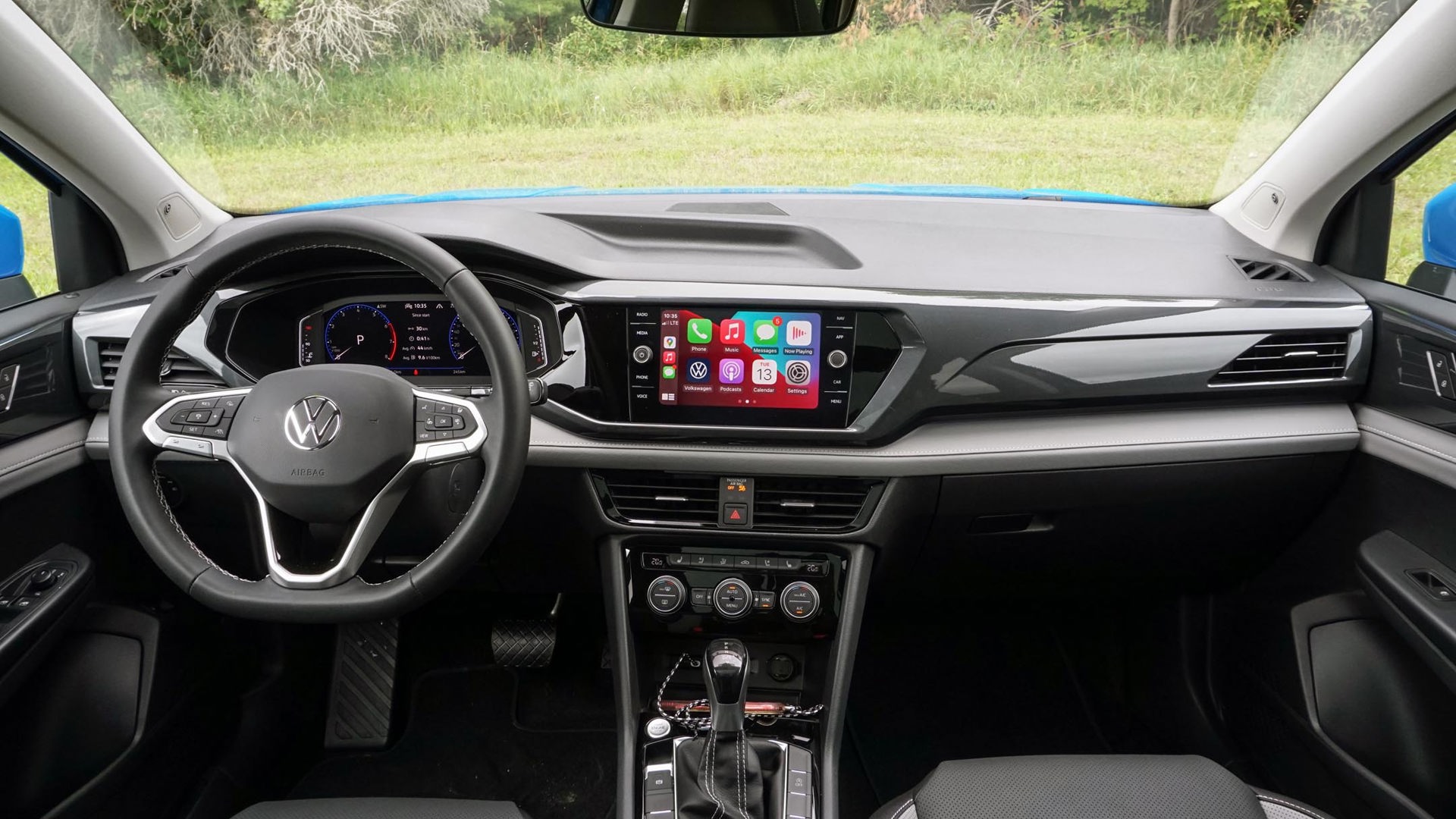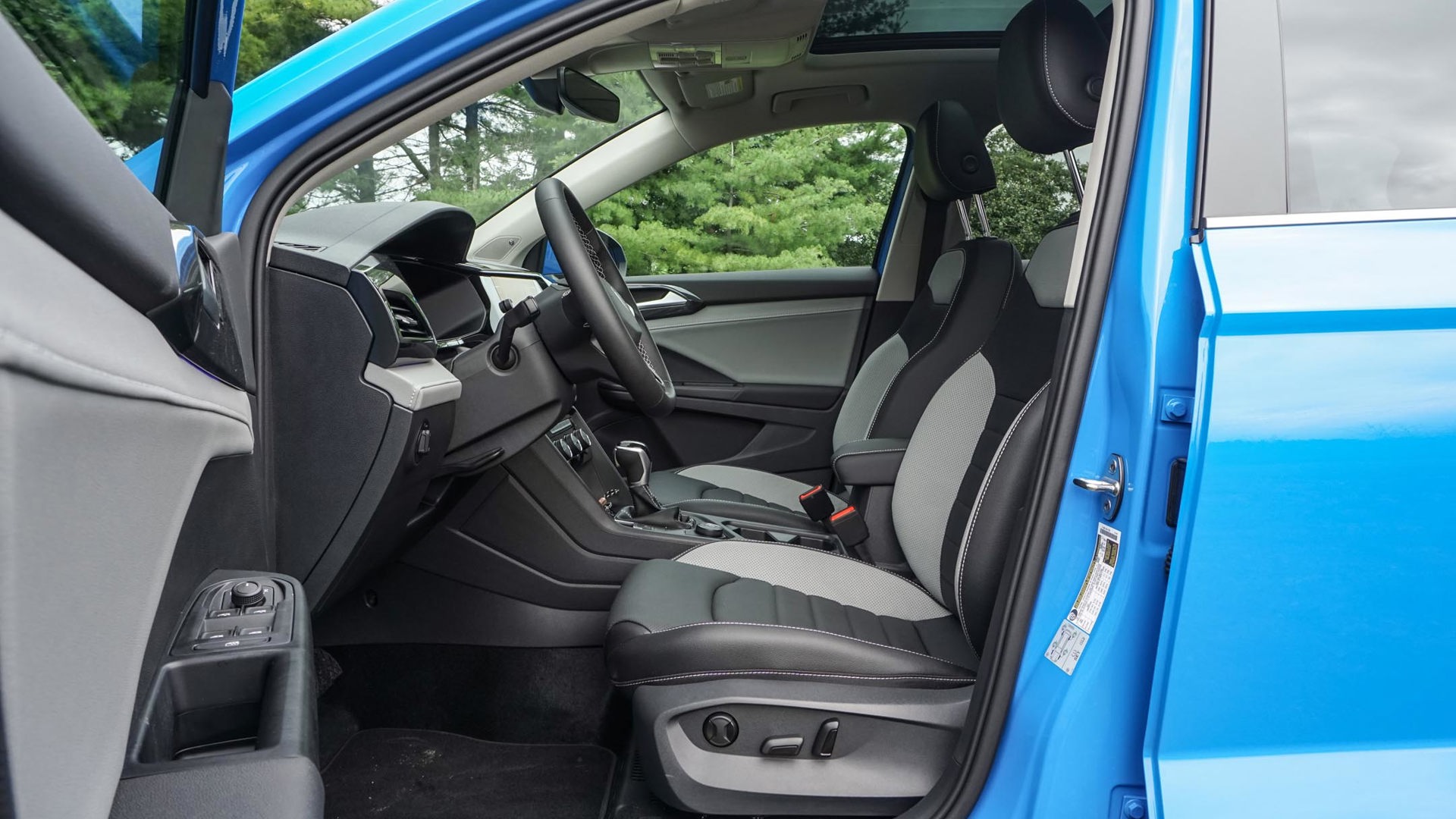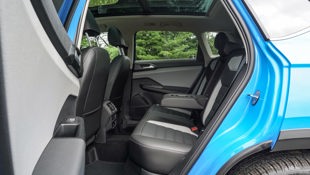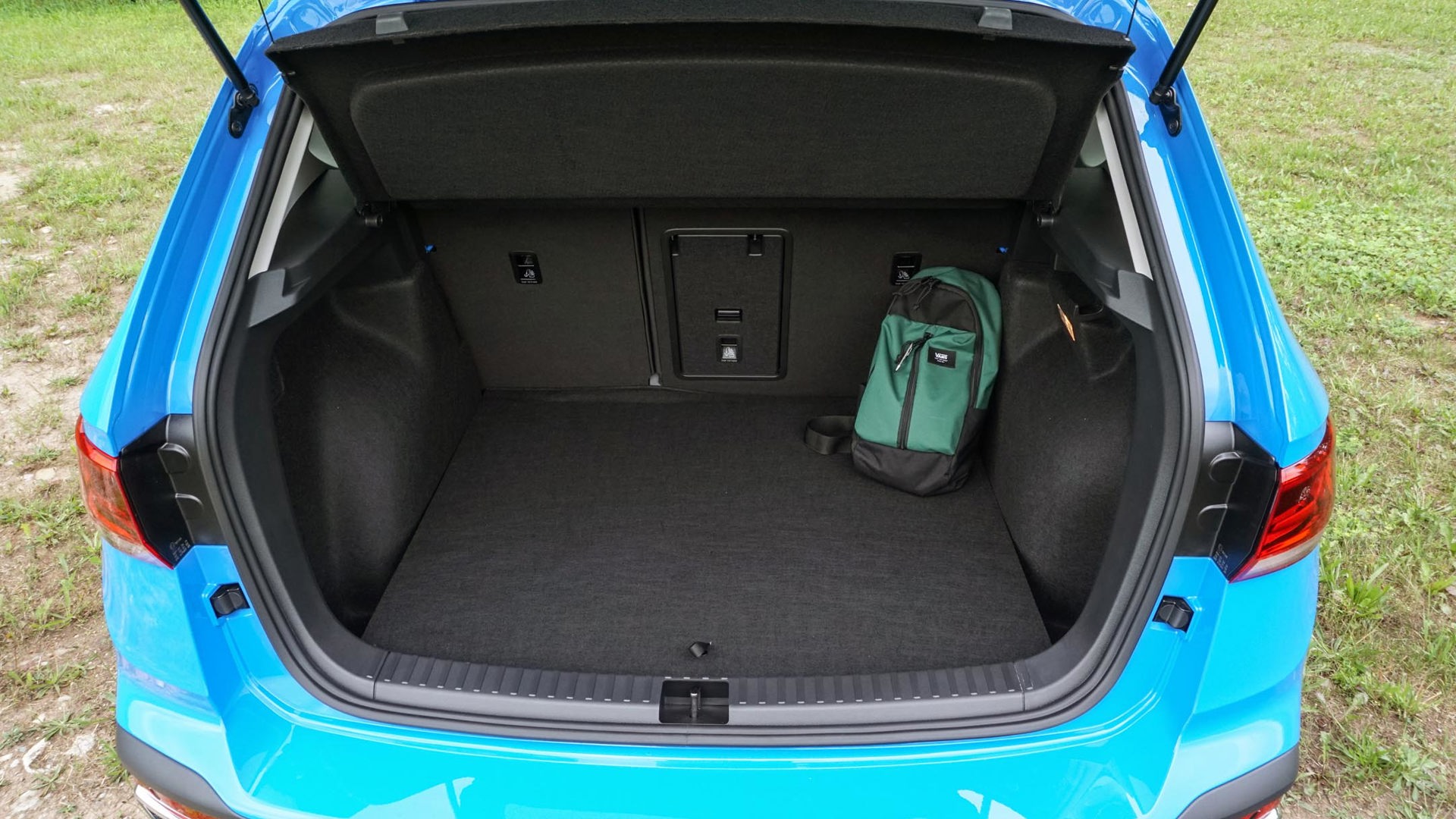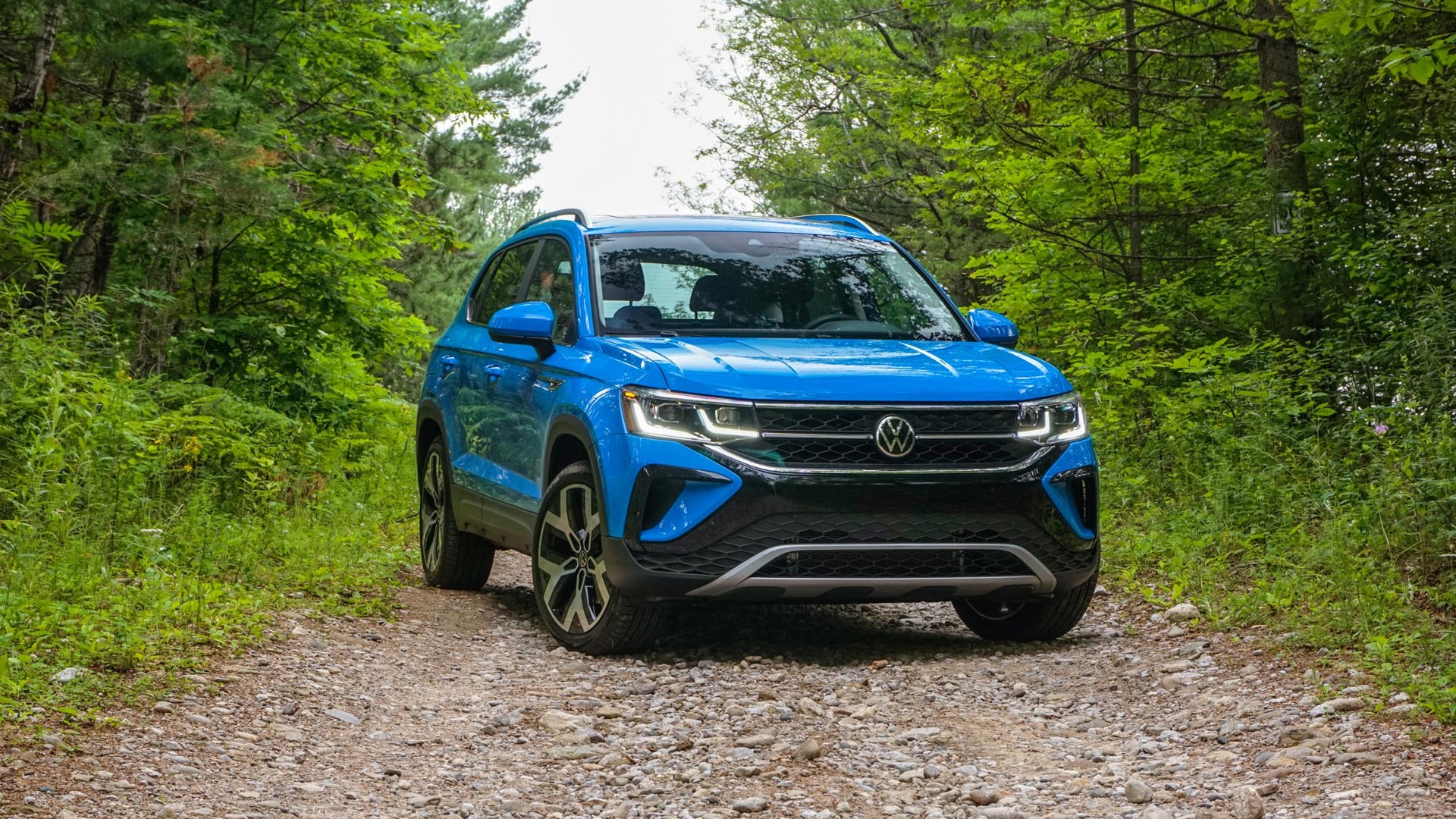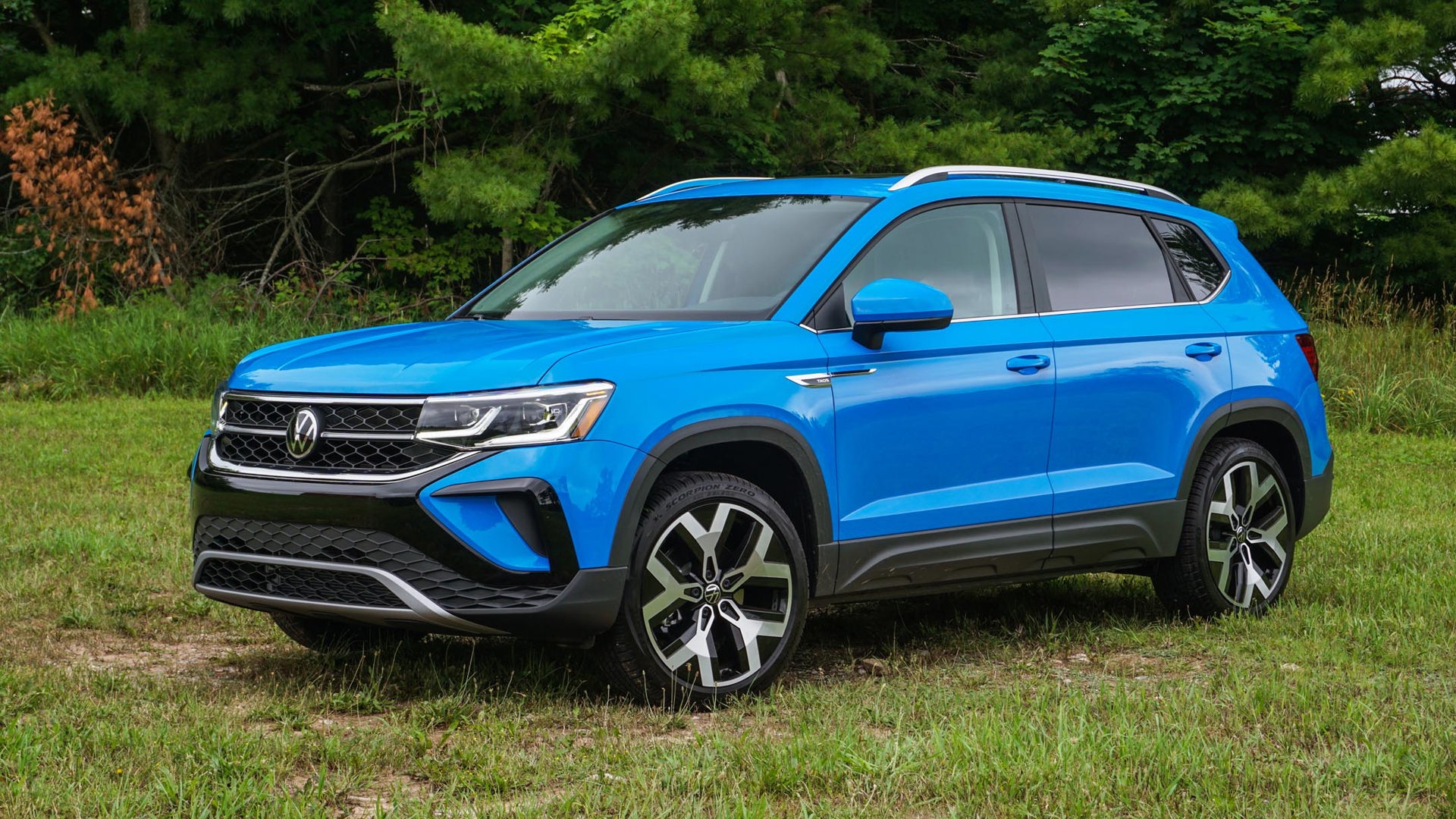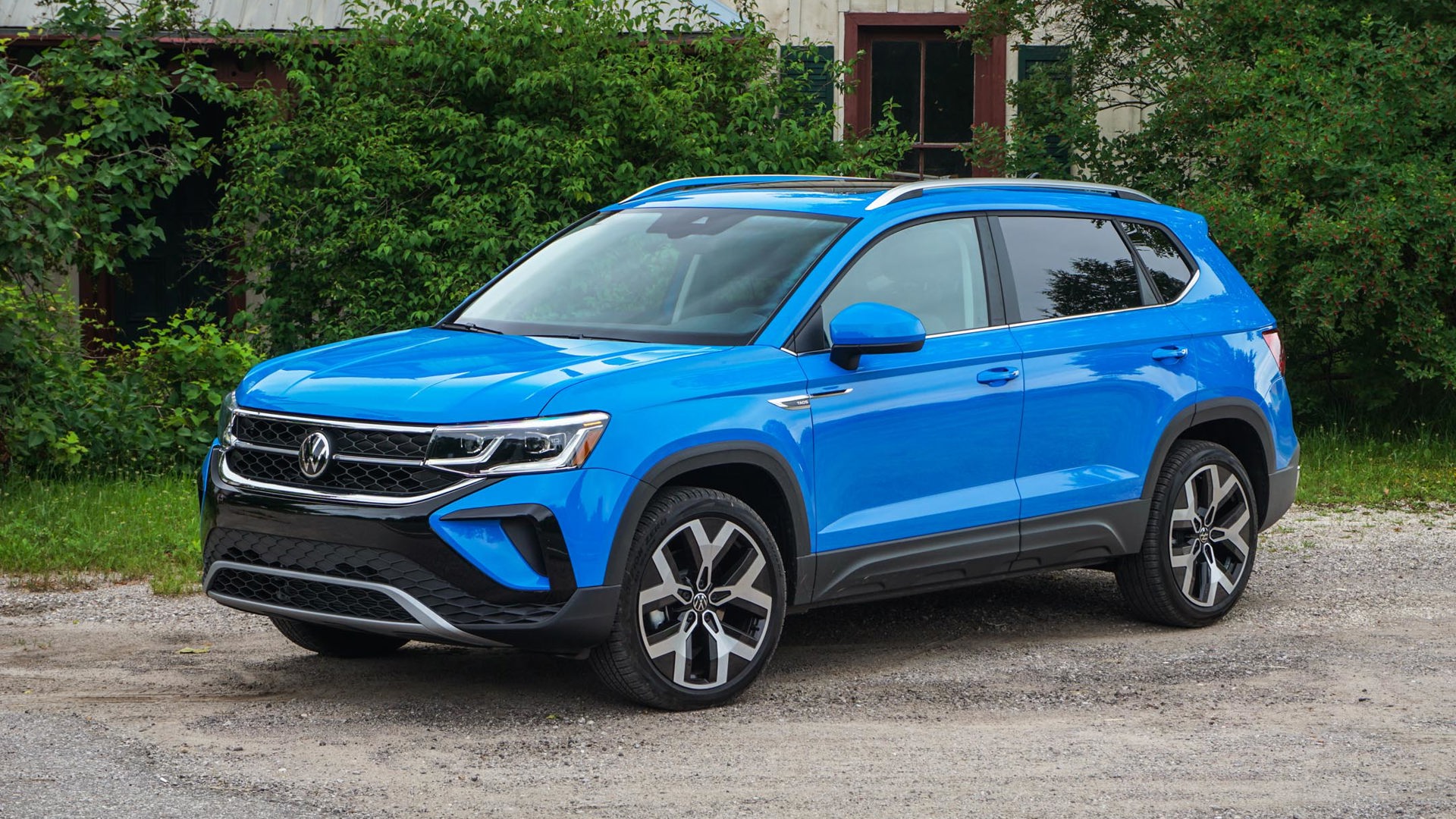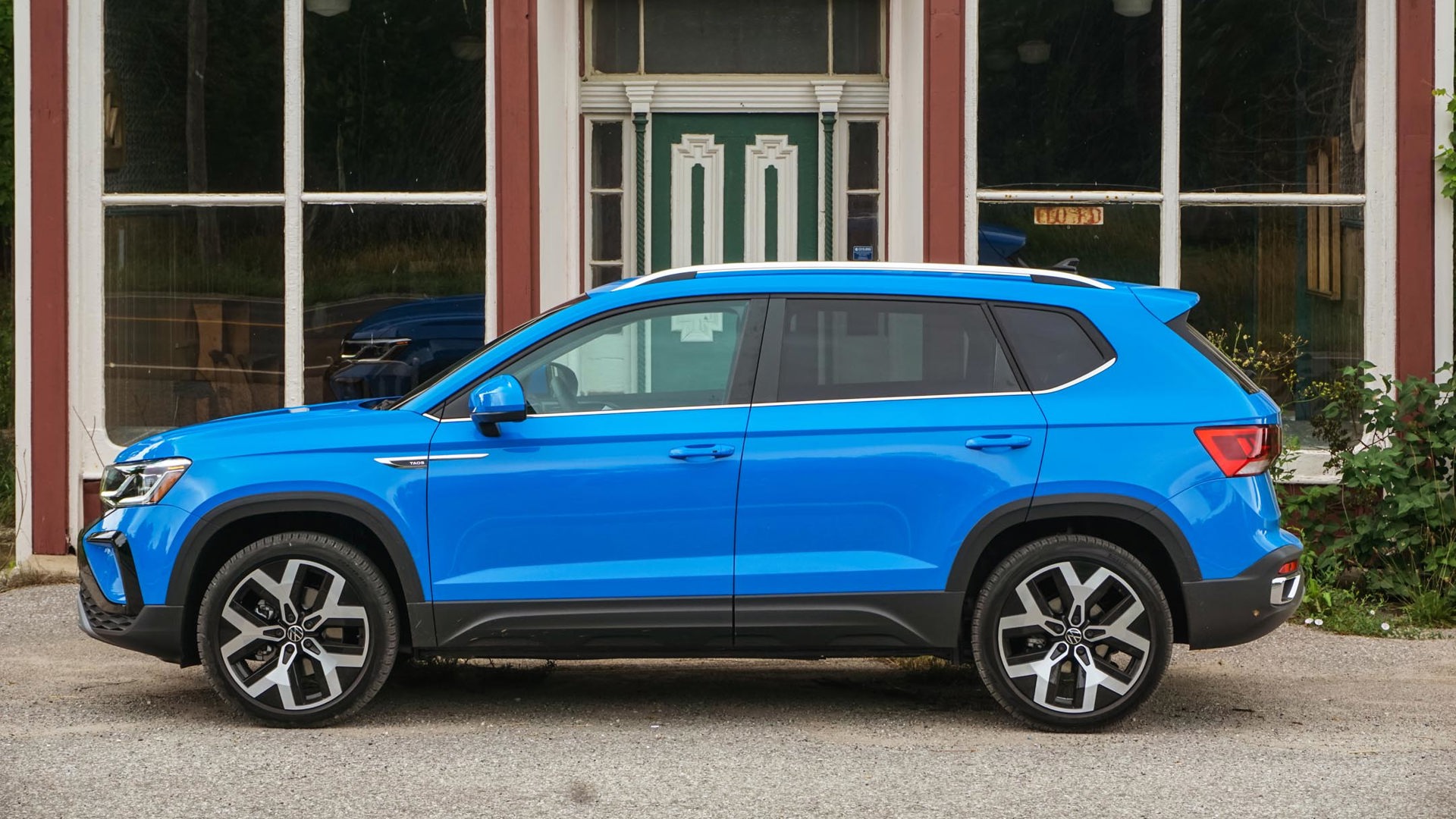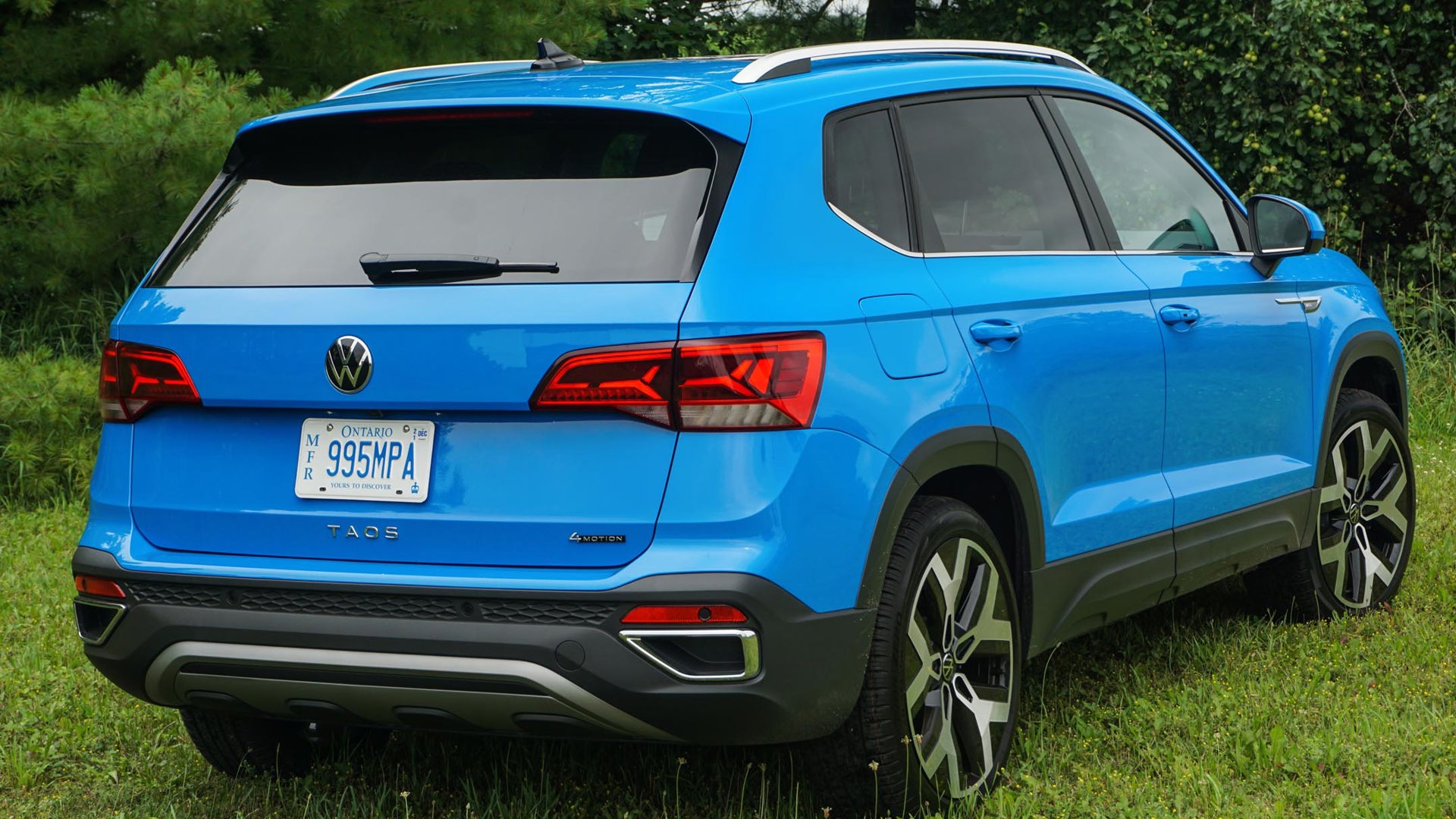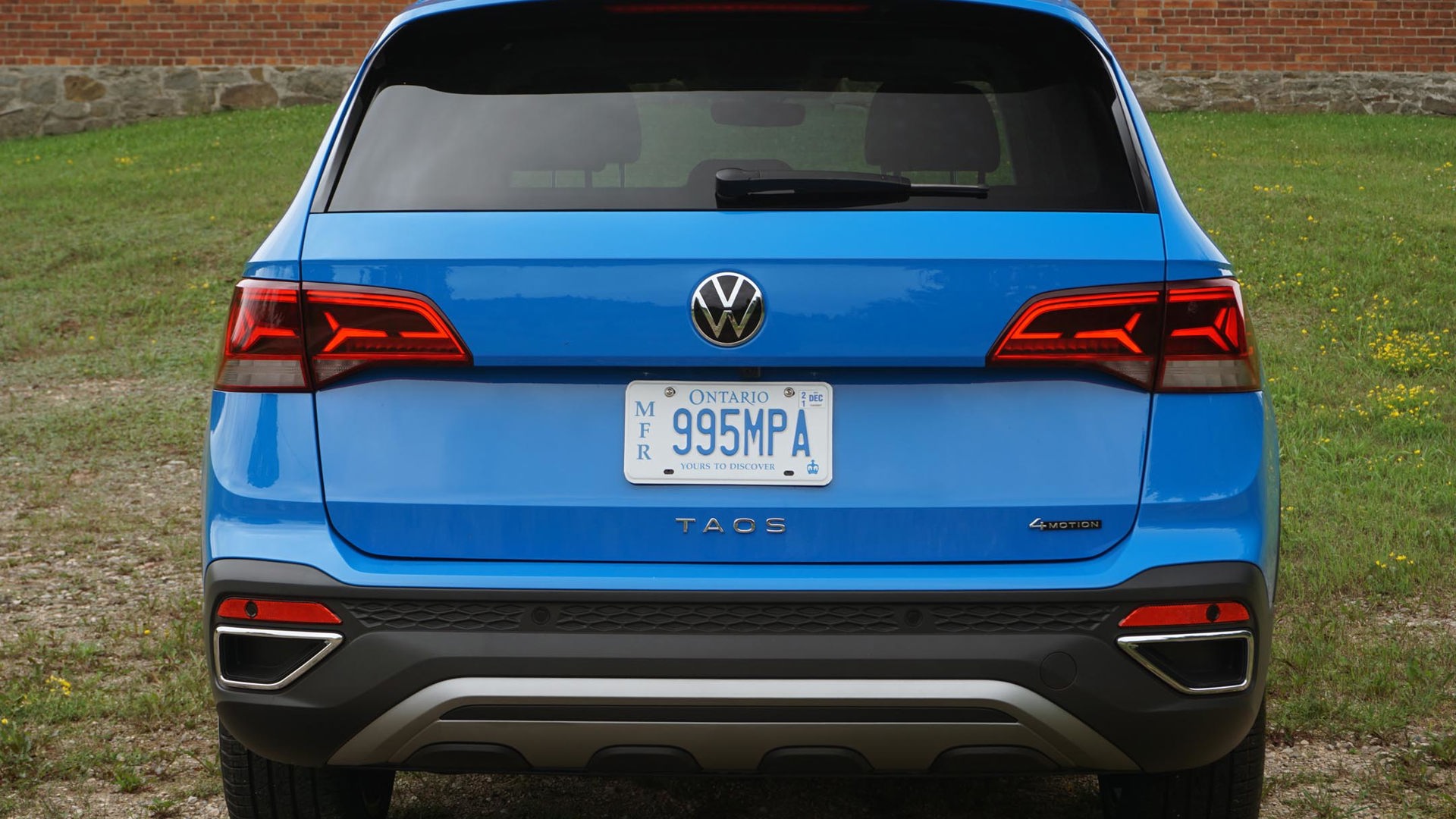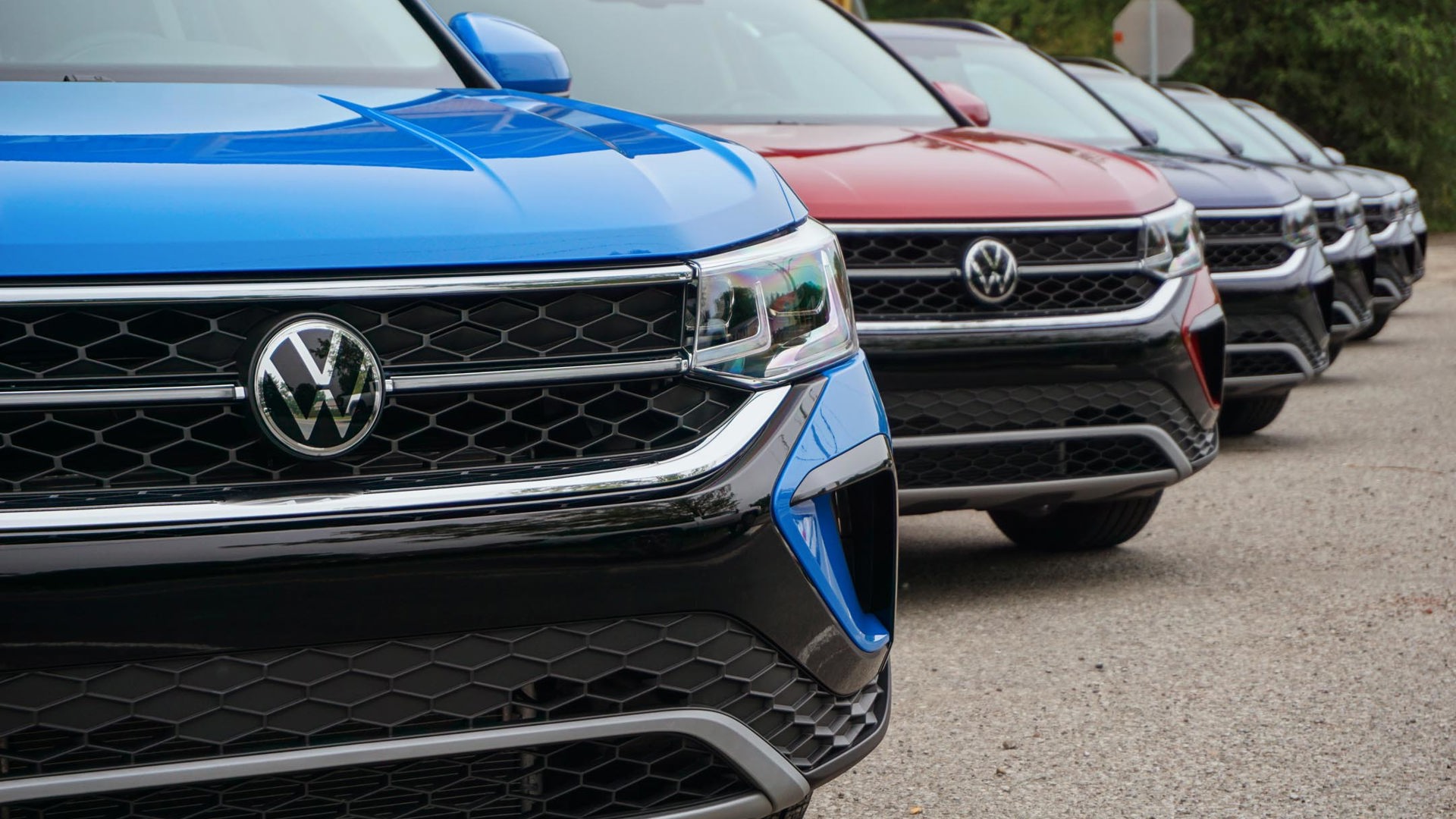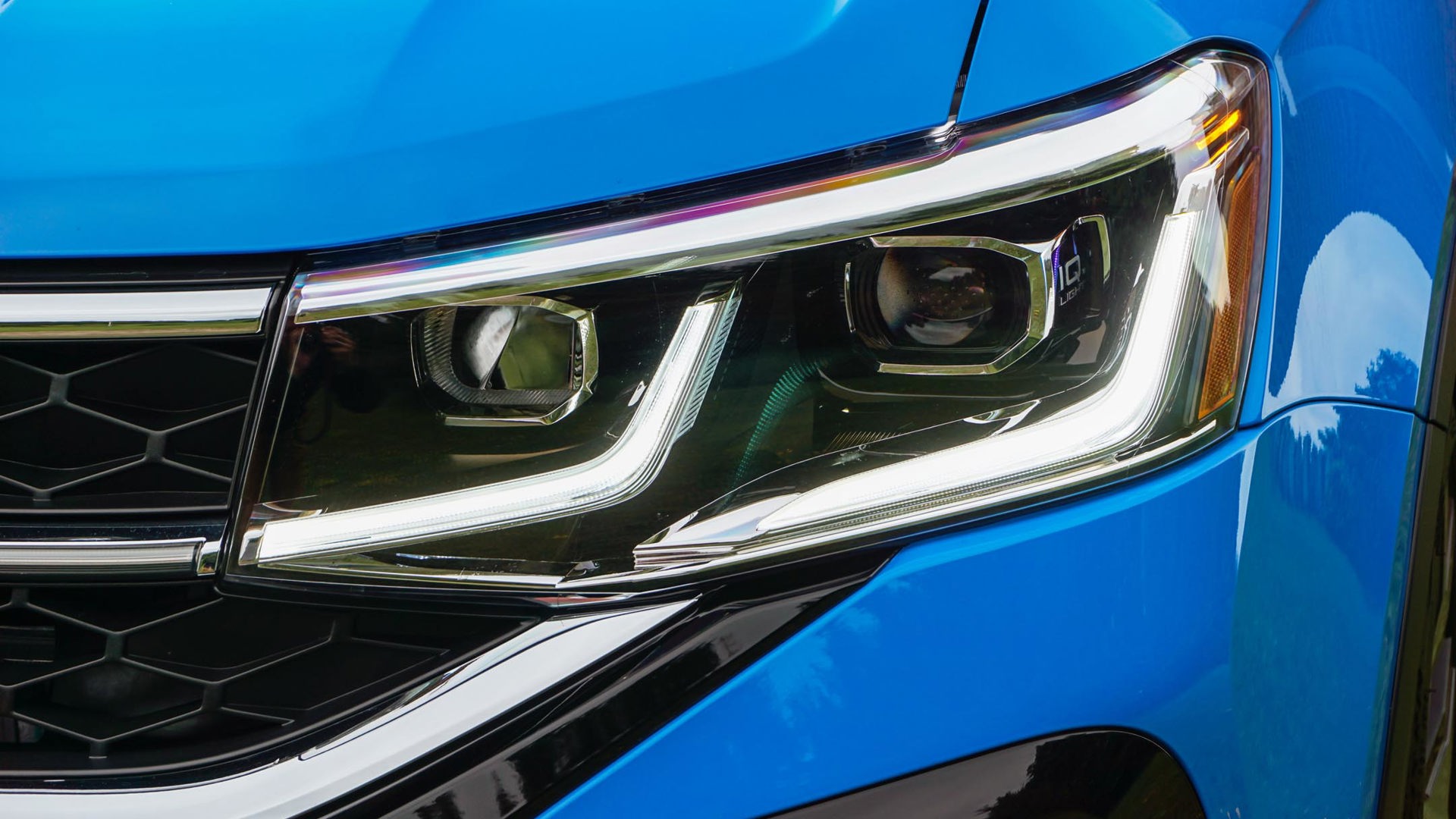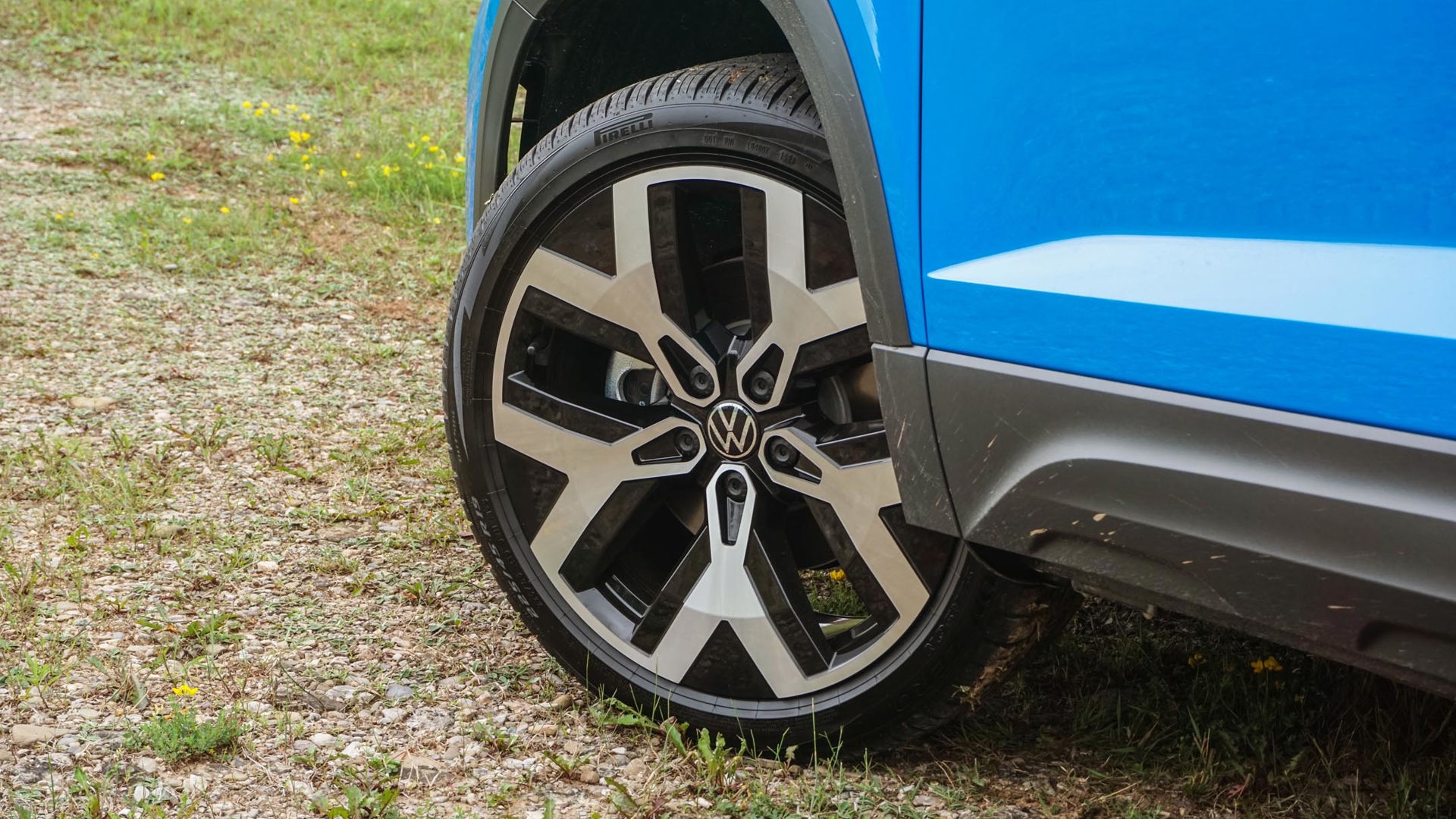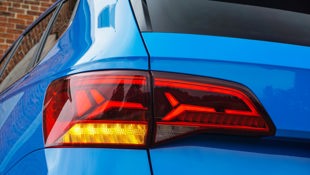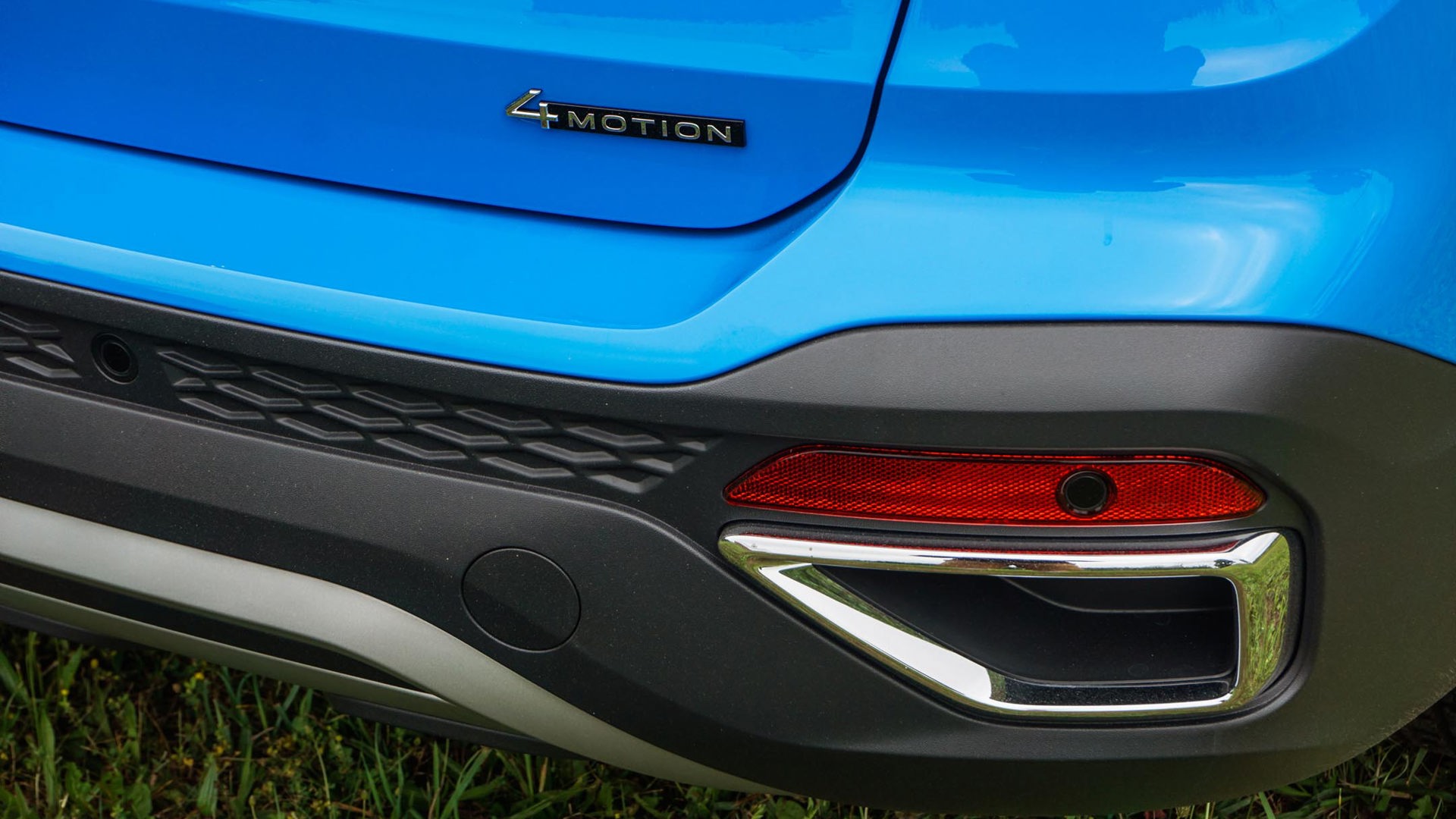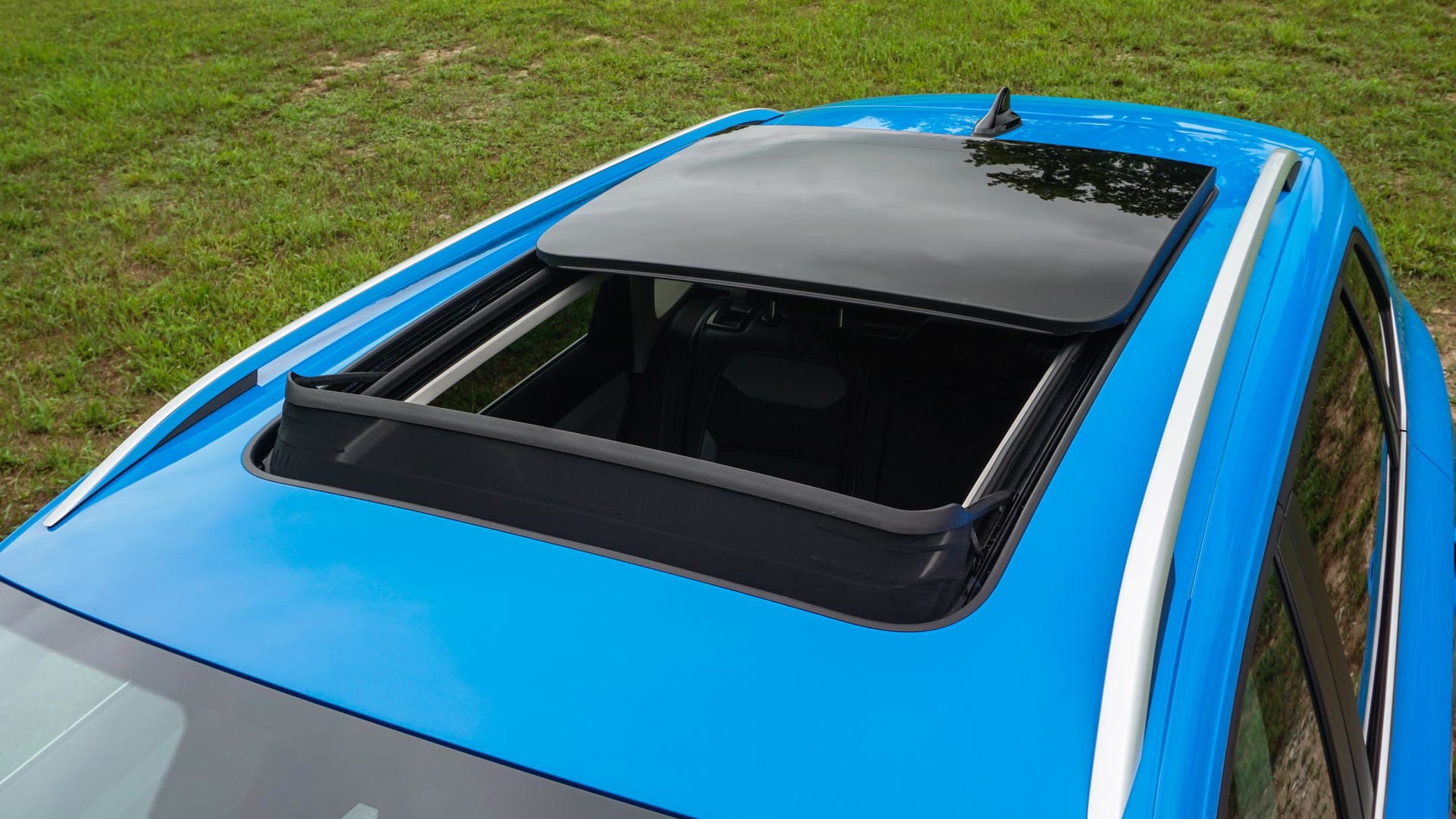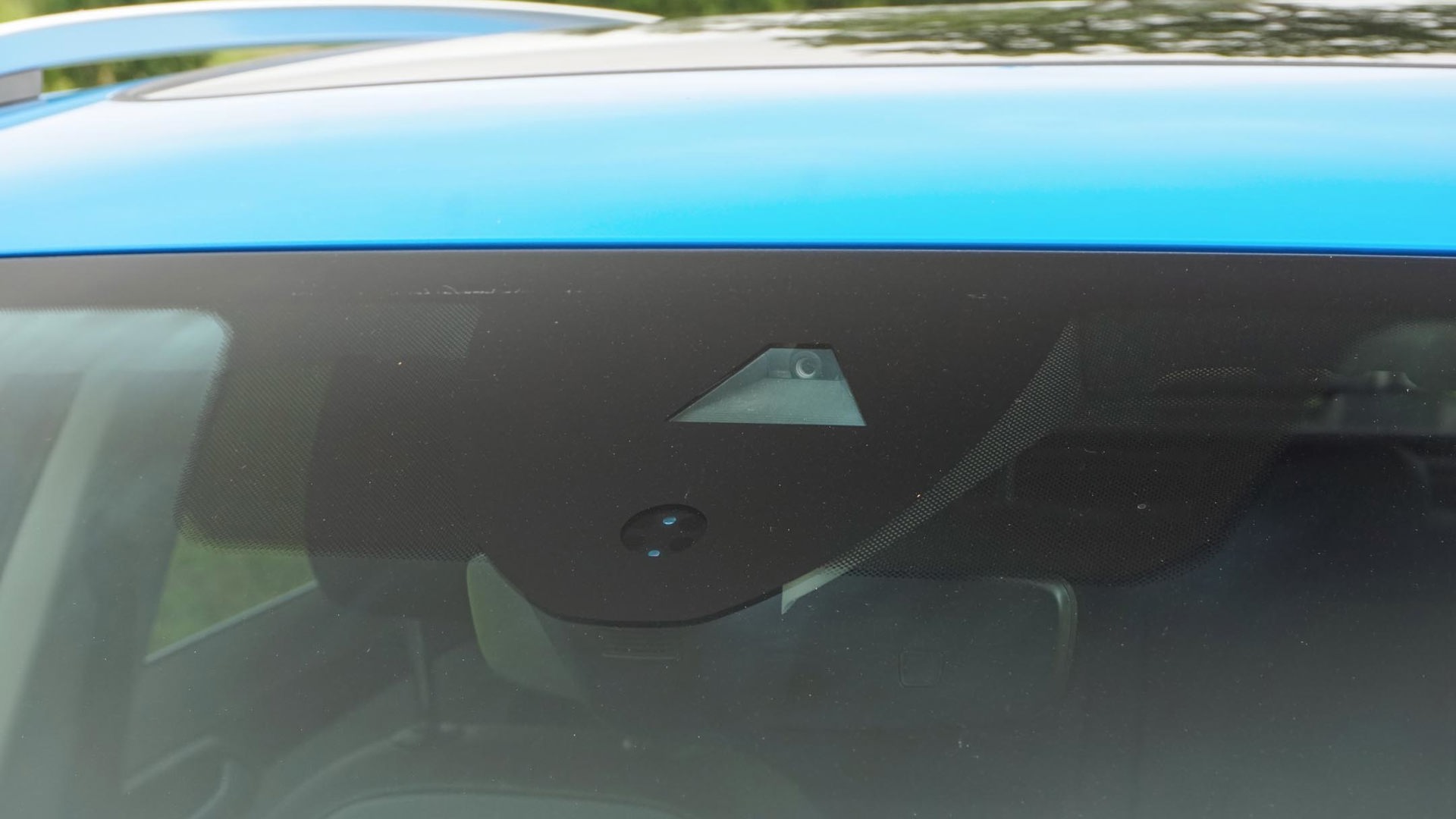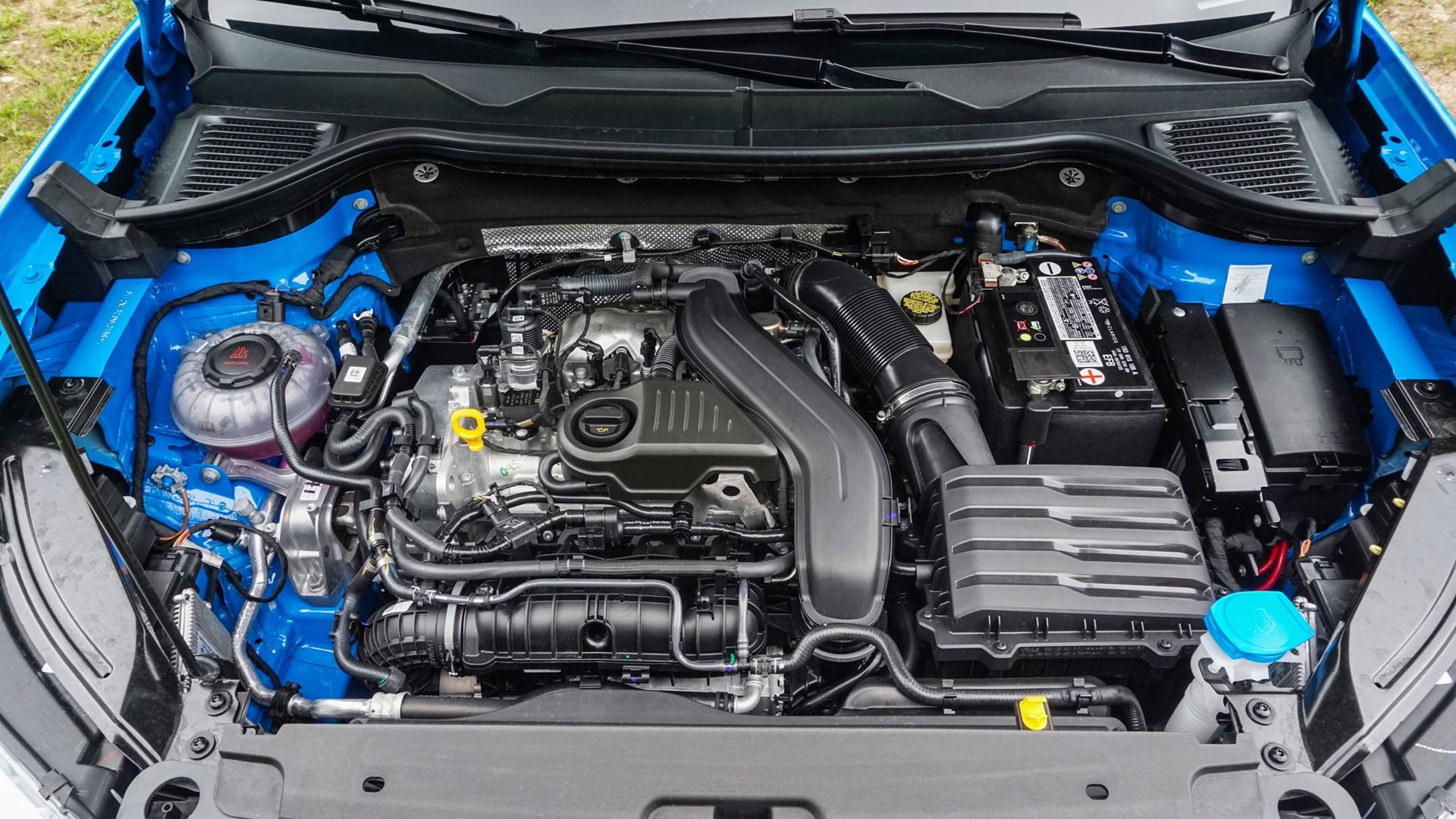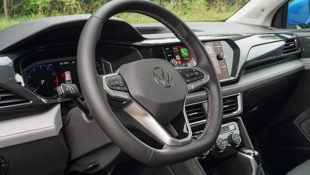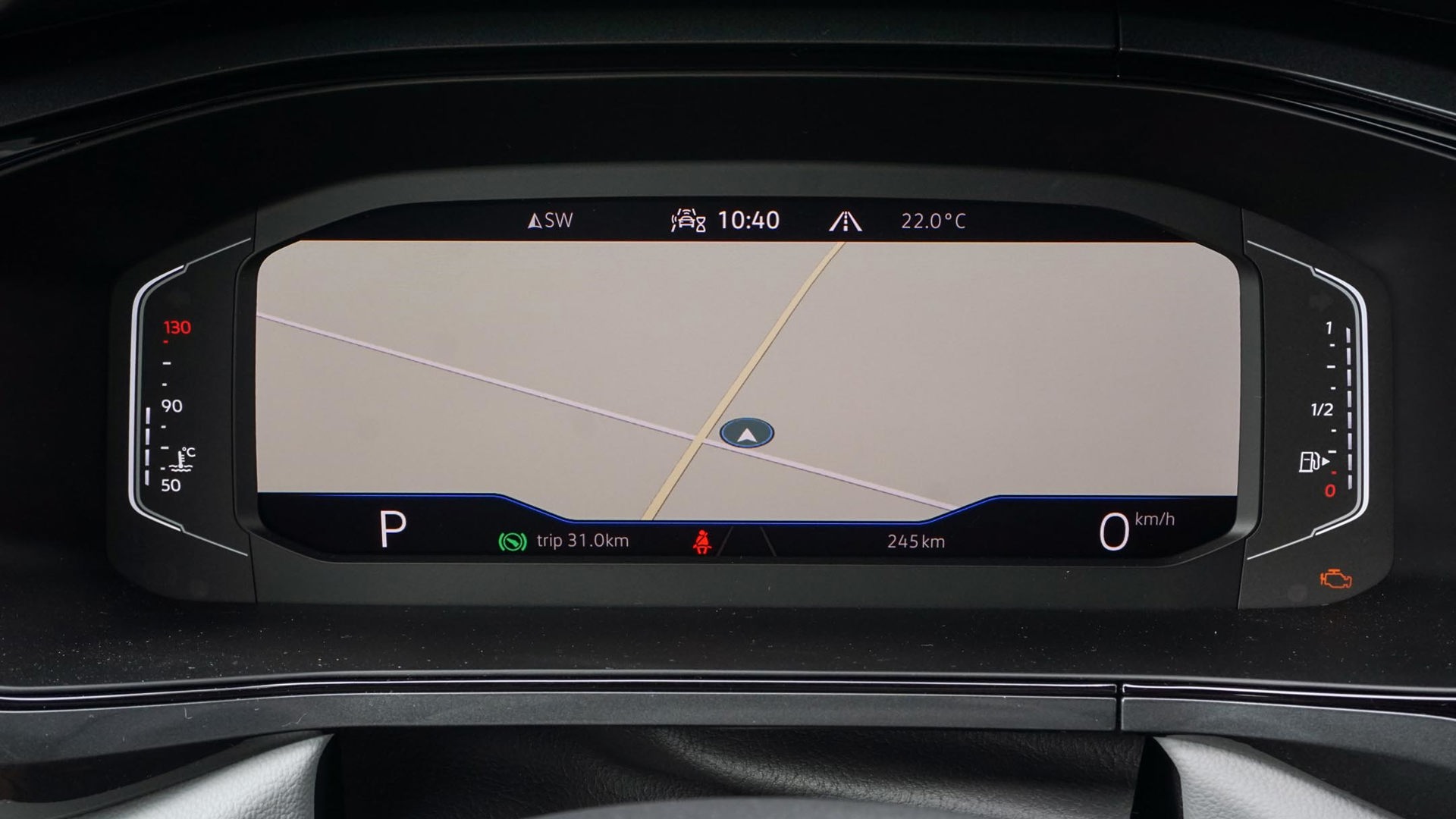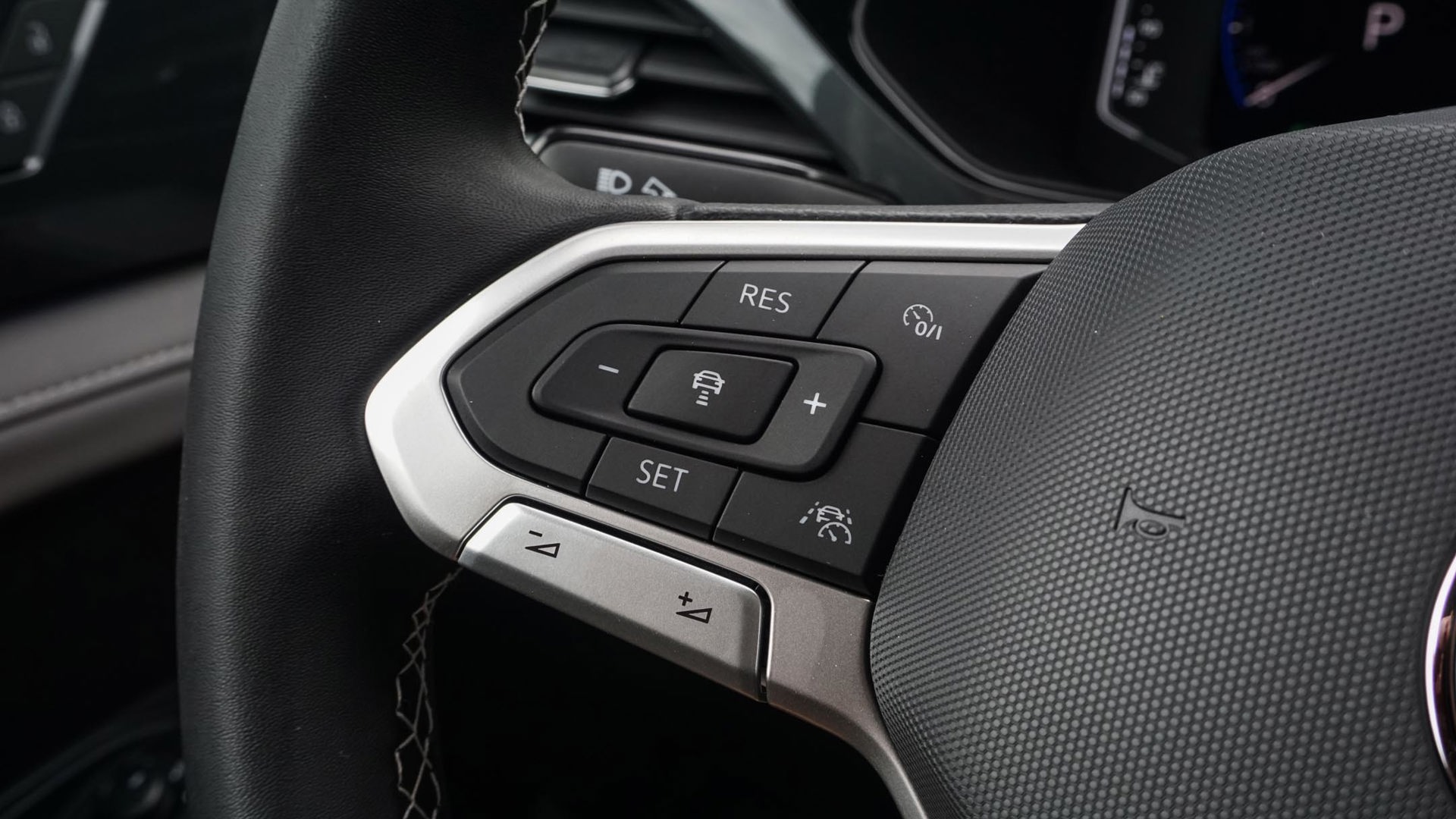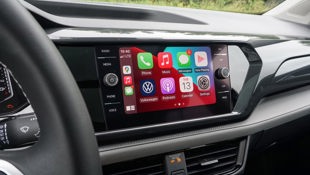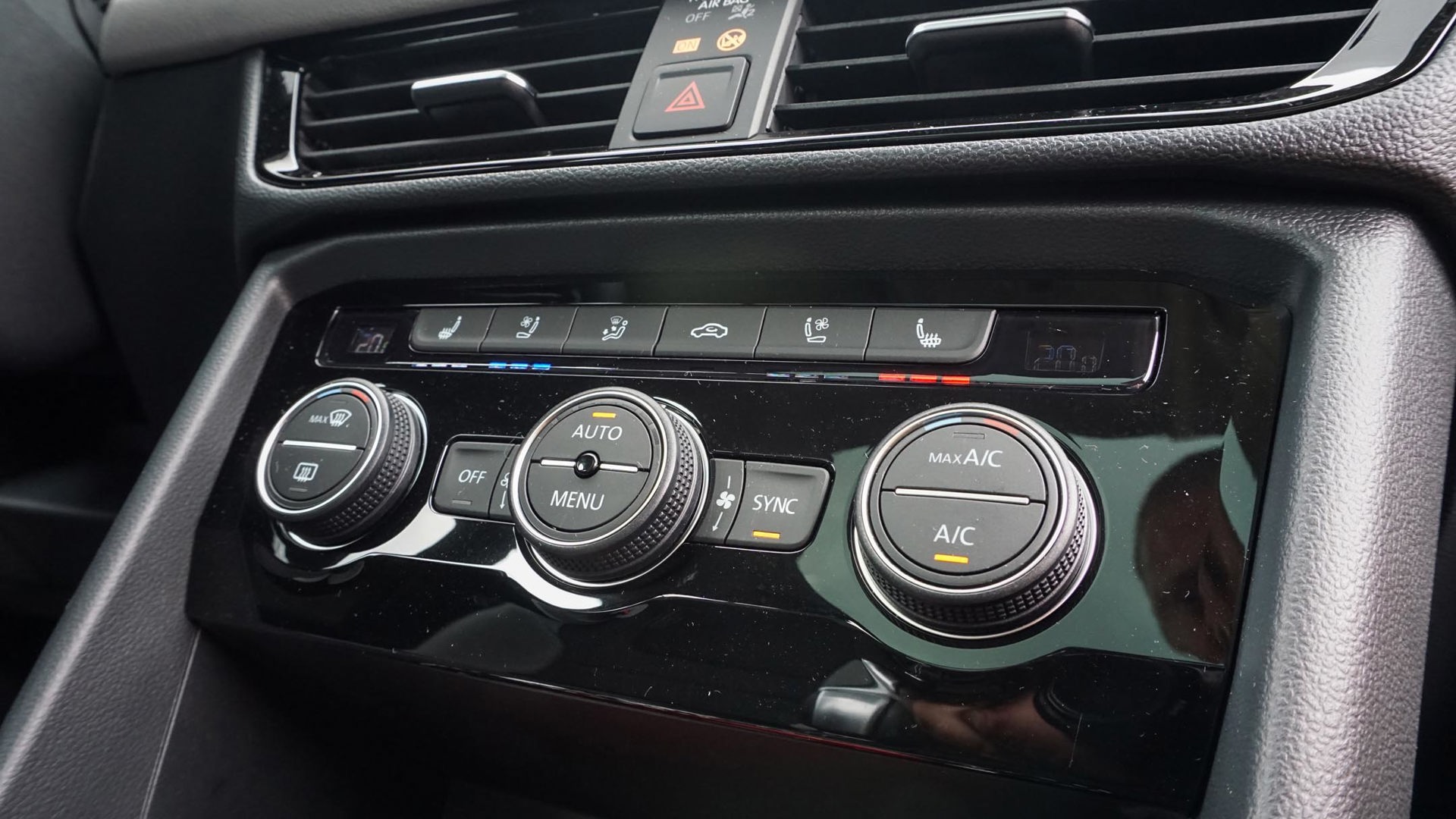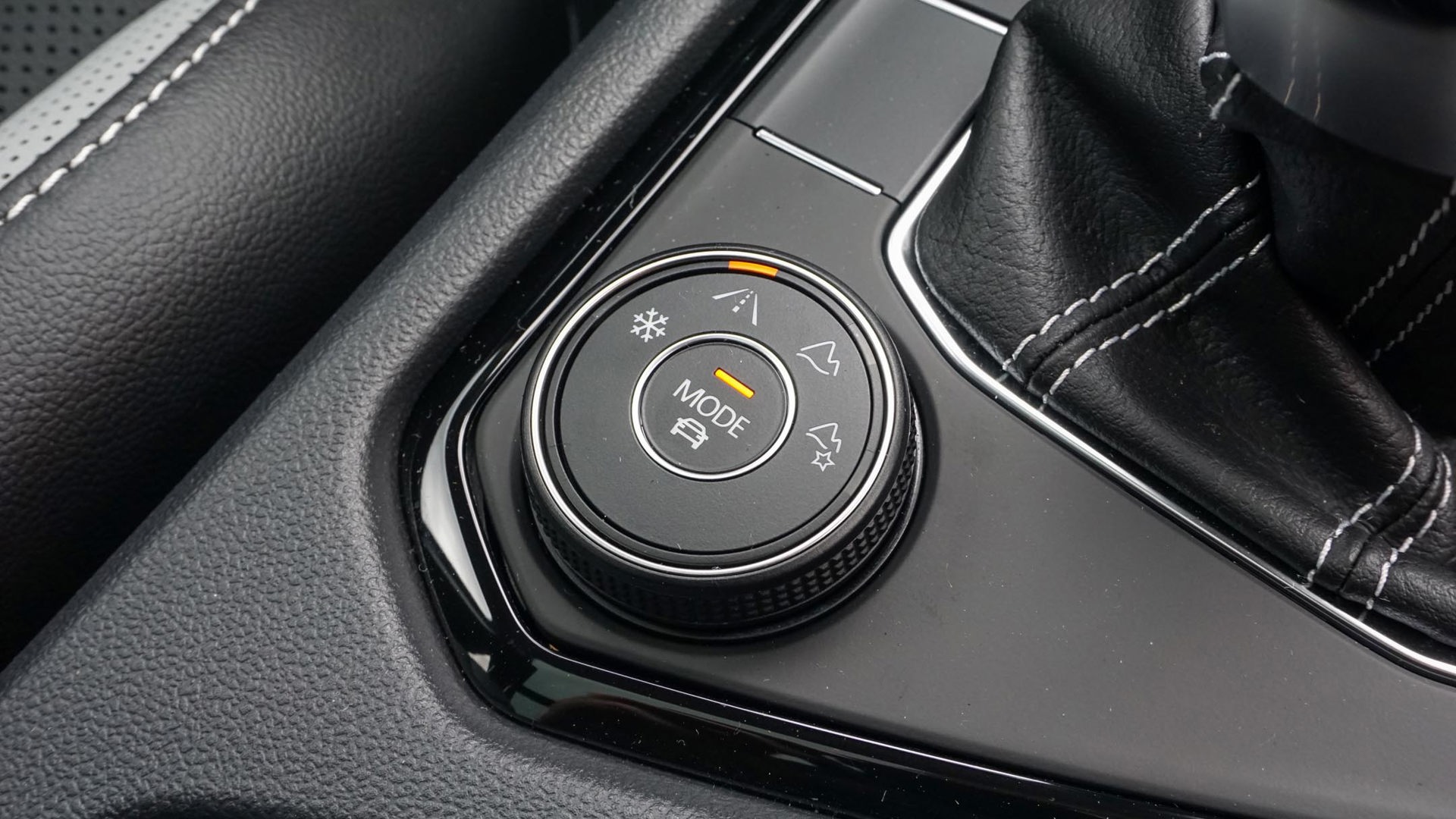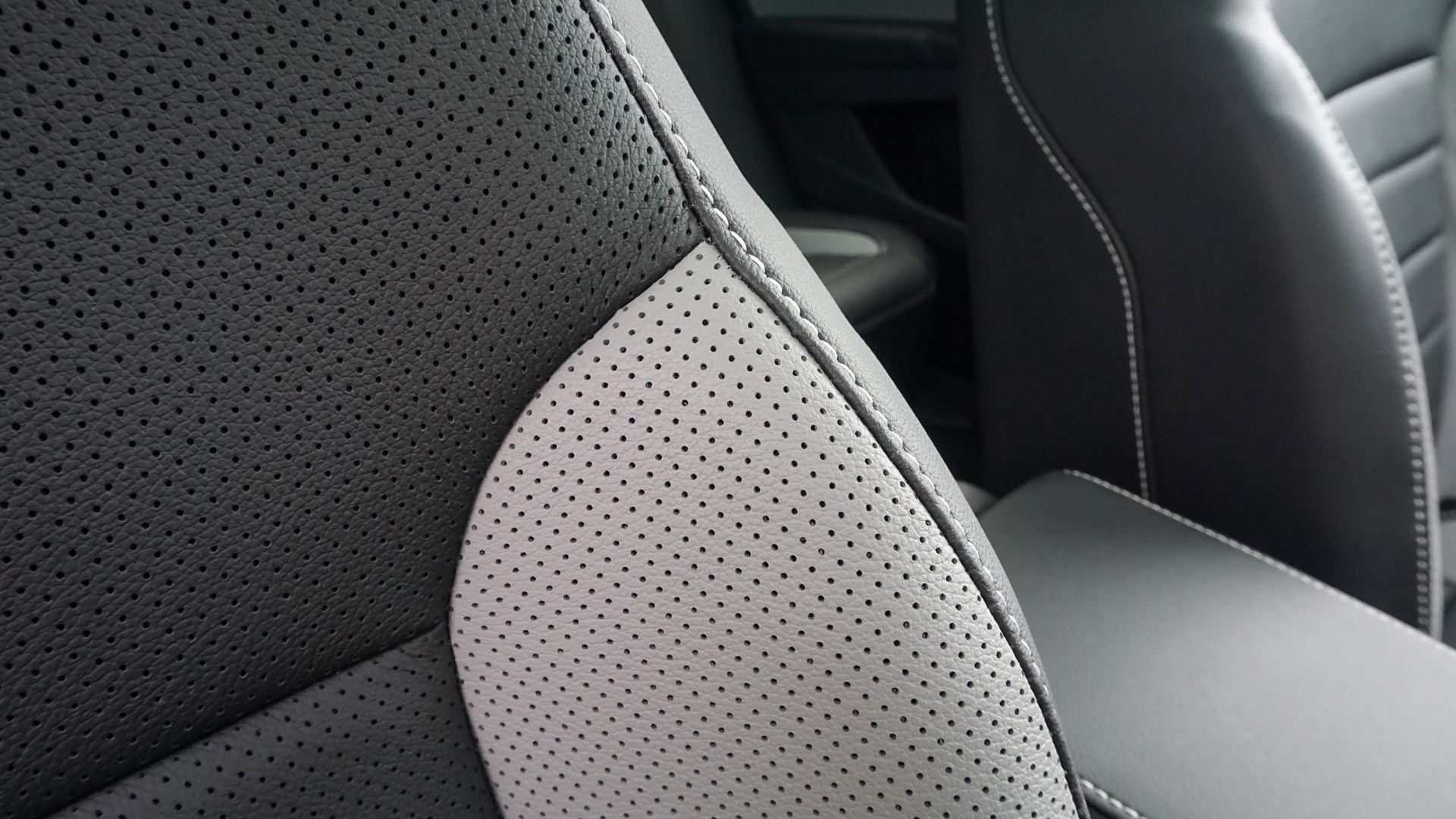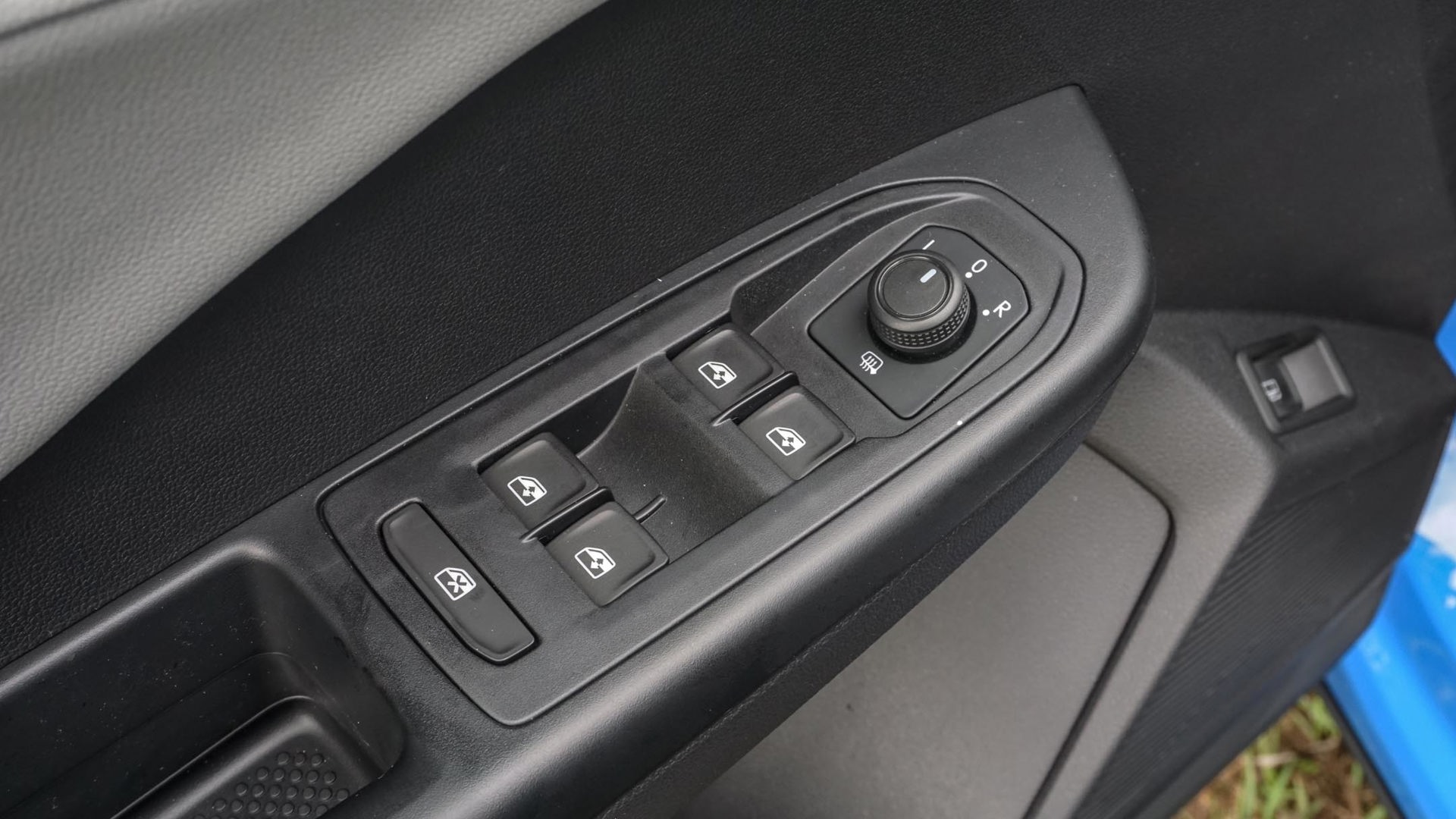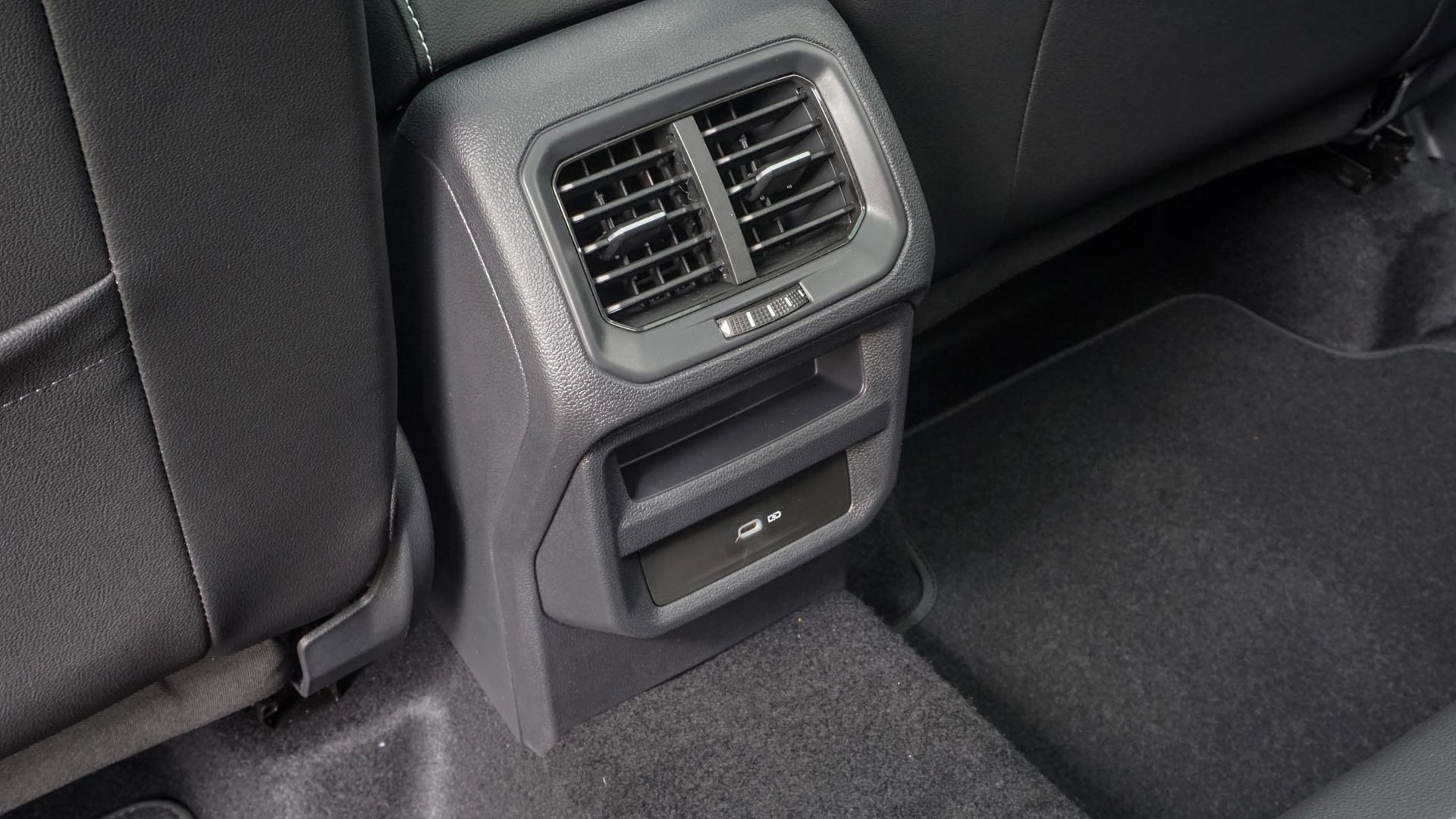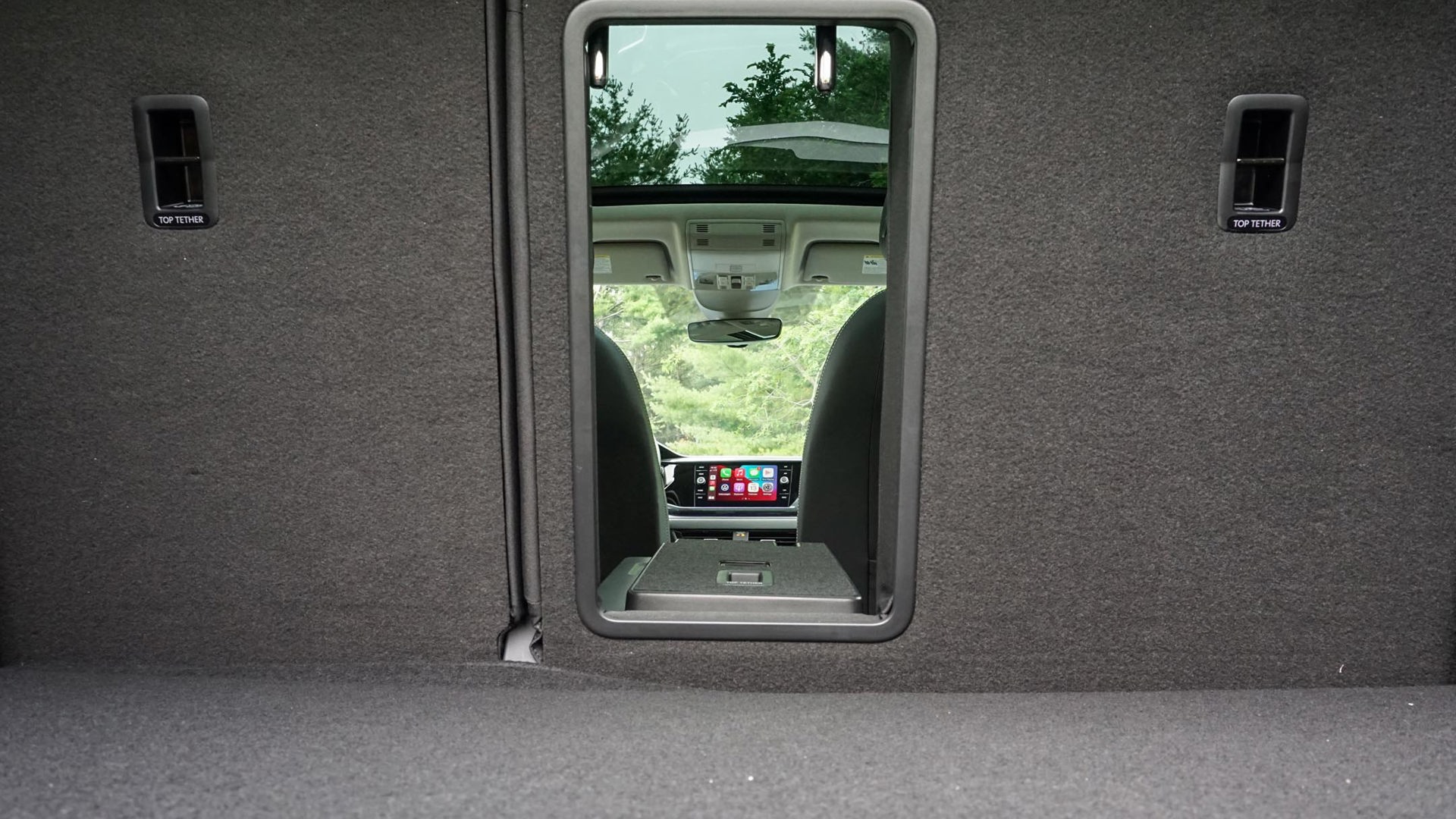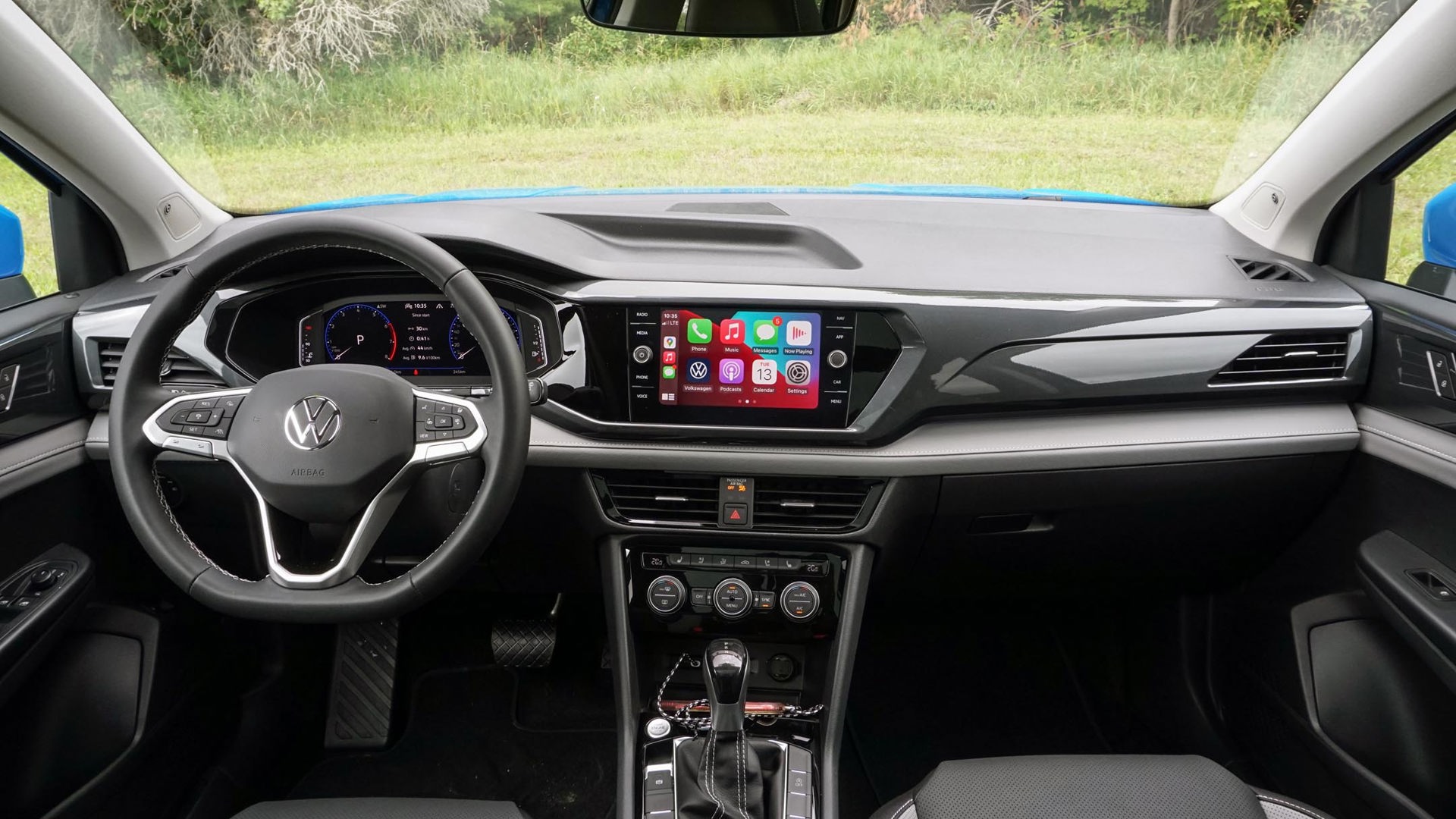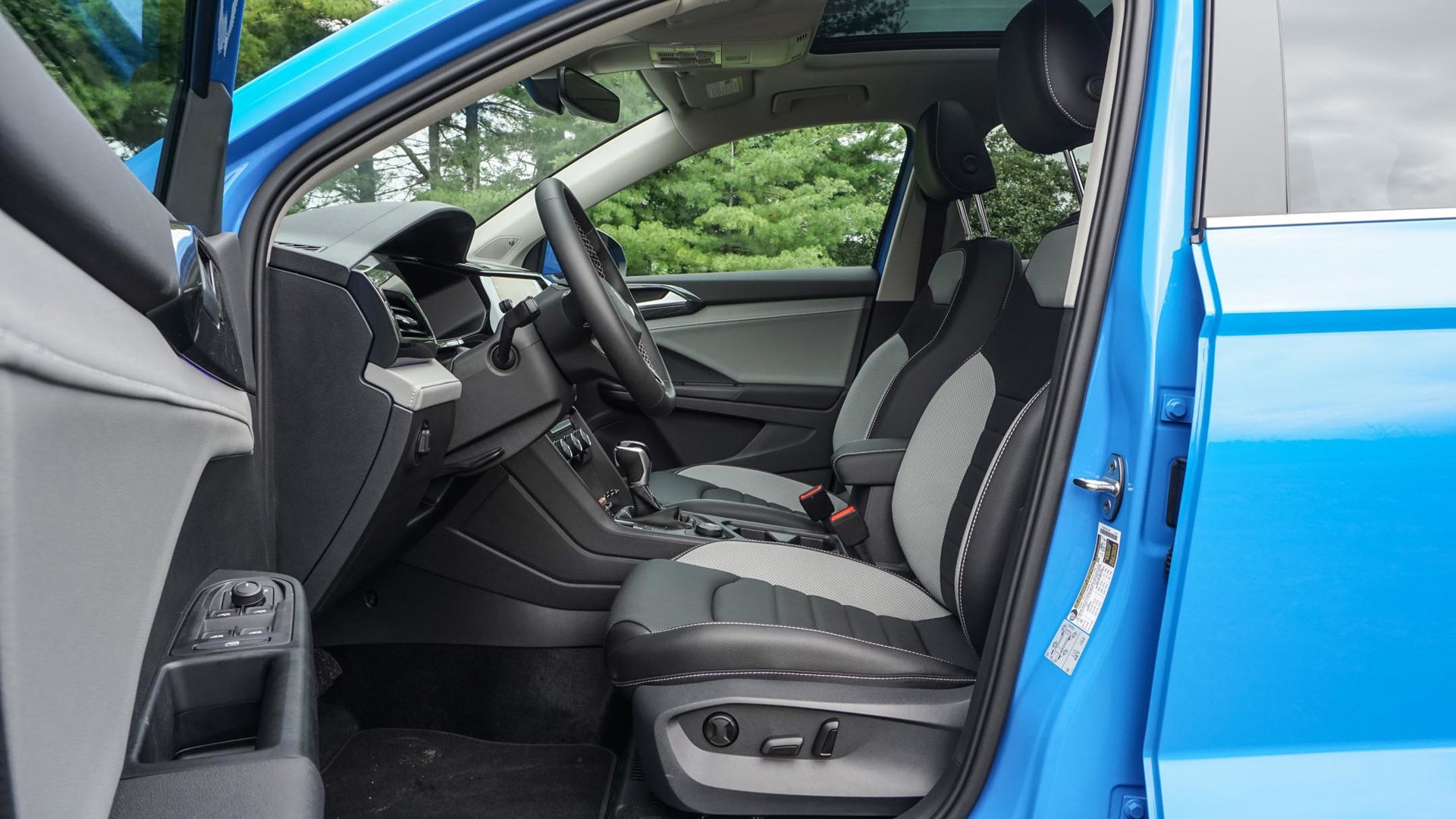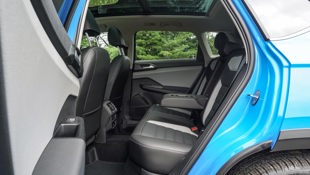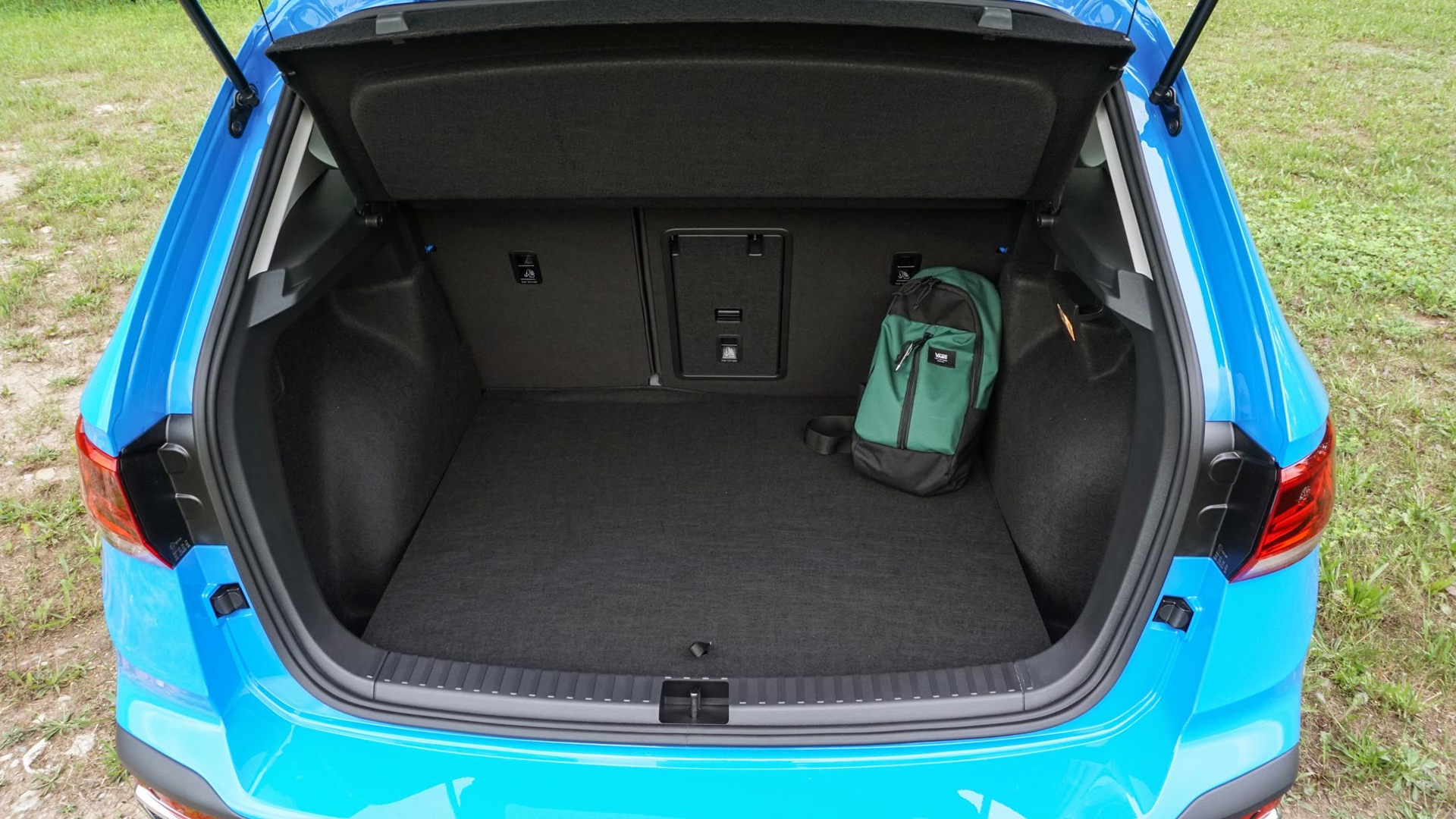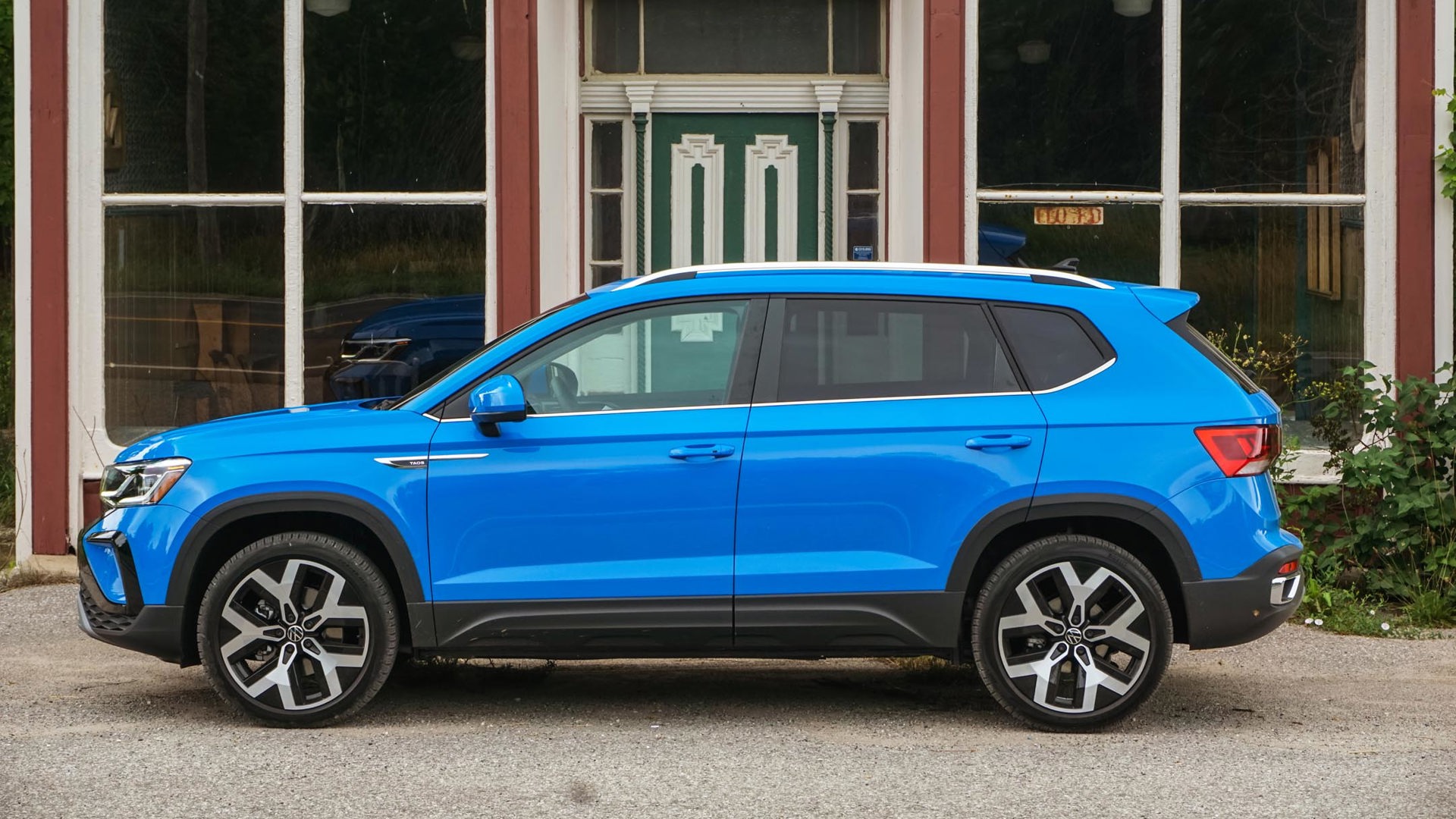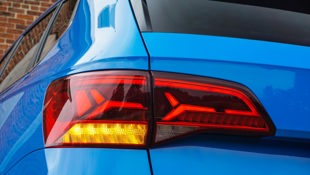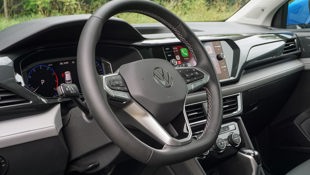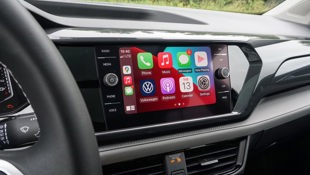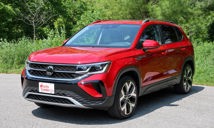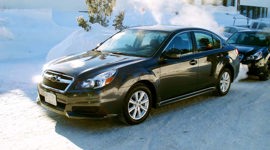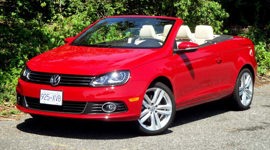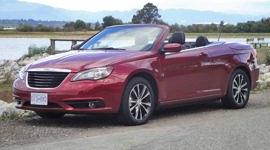After nearly five decades on the market, it’s hard to envision a Volkswagen lineup devoid of the venerable Golf.
Yet here we are, with 2021 representing something of a victory lap for the compact commuter car that came to define the segment over the years. Oh, sure, the sporty GTI and Golf R models will live on, but the happy little hatchback that has long served as no-fuss transportation for the masses will soon be no more.
Replacing it is the 2022 Volkswagen Taos, a crossover that slots beneath the Tiguan in the brand’s lineup. Not quite a compact but a little bigger than a subcompact like the Kia Seltos, this ’tweener has what it takes to make the Golf an afterthought in every way except for price.
Sticker Shock
As far as space goes, the 2022 Taos certainly offers more than its compact sibling – but it comes at a cost. The cheapest version available is $28,645 including a non-negotiable $1,950 destination charge, and that’s for a front-wheel-drive example; to add four-wheel traction takes another $2,500. That’s nearly $4,000 more than a base Golf which, yes, includes a six-speed manual transmission, but looks far more appealing on paper than this crossover.
And on it goes across the Taos lineup, with the Comfortline coming in at $34,345 before tax (but with standard all-wheel drive), and the range-topping Highline tested here starting at $38,645. Over at Kia, the most expensive Seltos rings in at $34,790, while a loaded Subaru Crosstrek is $36,295.
Space Makes the Case
The caveat is that the Taos is larger both inside and out than most conventional subcompact crossovers, but it stops short of small SUVs like its sibling Tiguan or the Subaru Forester. It’s similar in overall length to the Crosstrek, but the boxy and upright shape of the Taos makes it far more spacious for people and stuff.
There’s a sort of magician’s hat mystique to the Taos that surpasses what’s seen on the spec sheet, with the front of the cabin feeling even larger than its impressive measurements imply. The illusion created by the large windows no doubt helps but it’s more than a mirage, with the space optimized given this crossover’s small-ish footprint.
With 790 L behind the back seats and 1,866 L with them folded, the Taos is creeping awfully close to Toyota RAV4 territory. In typical German fashion, the space is also outstandingly functional, with the 60/40-split folding rear bench featuring a centre passthrough that allows long items like skis to fit down the middle while preserving four proper seats inside.
Familiar Feel
Take it from the owner of a 2014 Golf wagon: the Taos drives every bit like the replacement it’s supposed to. If the Tiguan is anecdotally known as the “biguan” for its size increase relative to its predecessor then this could easily be called the “talf,” as in tall Golf. It feels familiar both in the way it drives and how everything inside falls to hand – although it’s thoroughly modern in every way imaginable.
Yes, the Taos is taller than the Golf; and there’s some subsequent body roll as a result (there’s that whole talf thing again). The steering is also about as vague as it gets – a typical Volkswagen trait and not exactly an unnerving one, but it’s noteworthy nonetheless. Even in its so-called sport setting there’s simply no sense of a connection between the front wheels and what’s in the driver’s hands.
It is, however, a smooth driver, with the multi-link rear suspension that’s part of the all-wheel drive packaging providing comfortable composure over rough country roads and an even-keeled overall temperament. It takes extensive effort to unsettle the Taos, with confidence and control aplenty on loose gravel surfaces.
Pintsized Power
Under the hood is a turbocharged 1.5L four-cylinder that makes 158 hp and 184 lb-ft of torque, which is more than enough to motivate this crossover despite feeling a little lacklustre at times. Neither example driven during this short media program held in the Hockley Valley area about an hour northwest of Toronto felt particularly peppy down low, waking up around 3,000 rpm with a sort of peakiness that caused the Taos to surge ahead once that prescribed engine speed was reached.
Coupled with a dual-clutch transmission that failed to downshift in a timely manner when passing slower traffic, the lack of paddle shifters became something of a nuisance. However, while it was slow to respond in those scenarios this powertrain is ideally suited to the size and weight of the Taos – and it’s reasonably efficient, too. All-wheel-drive examples are rated at 9.5 L/100 km in the city, 7.4 on the highway, and 8.5 combined, according to VW Canada – figures that were easy to match over 200 km or so of testing.
It’s Got (Most of) the Goods
In terms of amenities, the top Highline trim certainly impresses, though it’s missing a few features that should be included this close to $40,000. There’s no power tailgate, for instance, nor are the rear seats heated. There’s also no head-up display – a rarity in this segment, sure, but not at this price. More glaringly, driver-assist items like adaptive cruise control that works in stop-and-go traffic and lane-keep assist require an additional package that’s only offered with the most expensive model. Add those ($1,000) and the snazzy 19-inch wheels seen here ($500), and the Taos crests the $40,000 mark before tax.
Looking past those shortcomings, the front seats are heated and ventilated, the upholstery is a faux leather that looks and feels like the real stuff, the steering wheel is heated, there’s a massive panoramic sunroof, and the instrument cluster is a 10.25-inch digital unit that’s fully configurable and can be used to pull up a variety of information including a full map view.
That stuff is on top of the eight-inch touchscreen, wireless Apple CarPlay and Android Auto connections, dual-zone automatic climate control, blind-spot monitoring, and automatic emergency braking that’s part of the Comfortline trim ($34,345). There’s also wireless phone charging, a trio of USB-C ports, satellite radio, and power-adjustable front seats – features the base trim misses out on. That version gets a lone USB-C port and heated front seats, as well as wired Android and iOS connections, but that’s about it.
Final Thoughts
The 2022 Volkswagen Taos is the type of vehicle that’s more impressive than the sum of its parts. The absence of standard advanced safety equipment is a serious shortcoming, and then there’s the stuff that’s missing at the top of the lineup despite a price tag that nips at the heels of larger entries out there.
What the Taos has in its favour is flexibility. Its footprint is relatively small but the space it packs inside makes it the kind of crossover that has broad appeal. Shopping for a subcompact? This delivers some of the most space in the segment. Considering a compact? The Taos gets awfully close for slightly less money.
It’s certainly missing some features – particularly at the top of the lineup, where there’s no power tailgate, heated rear seats, or a head-up display – but stuff like the configurable instrument cluster helps the Taos hit back in a meaningful way. Better still, it’s as easy to use as anything else here, with the same kind of predictability that has come to define Volkswagen products through the years. The Golf will be missed by many when it’s gone – your humble author included. The 2022 Taos is a pricey replacement, but it’s certainly a worthy one.
